Prohibited Seller Activities
These prohibited seller activities are established to maintain a safe buying venue for customers and a fair selling environment for our merchants. Failure to comply with the terms of this policy can result in cancellation of listings and or permanent removal from Newegg Marketplace.
Please Note: This policy is in addition to, and in no way limits, your other obligations pursuant to our Policy & Agreement. You can reference the Newegg Marketplace Seller Agreement by clicking here.
General Guidelines
The following guidelines apply to both sellers of products and services. For guidelines specific to products or services, see the information following this section.
1. Attempts to divert transactions or customers
Any attempt to circumvent the established Newegg Marketplace sales process or to divert Newegg customers to another website is prohibited. Specifically, any advertisements, marketing messages that lead, prompt, or encourage Newegg customers to leave the Newegg website are prohibited.
Prohibited activities include the following:
• The use of email intended to divert customers away from Newegg.com and or Newegg Marketplace.
• The inclusion of hyperlinks, URLs or web addresses within any seller generated confirmation email messages or customer communication email messages.
• As part of Newegg Marketplace Content Policy, inclusion of hyperlinks, URLs or web addresses in any product/listing description fields that are intended to divert customers away from Newegg.com and or Newegg Marketplace.
2. Unauthorized & improper Seller Store Names
The Seller Store Name (identifying a seller’s business entity on Newegg Marketplace) must be a name that: accurately identifies the seller; is not misleading; and the seller has the right to use (that is, the name cannot include the trademark of, or otherwise infringe on, any trademark or other intellectual property right of any person; cannot be identical or similar to another company’s name protected by trademark law).
3. Seller Store Name
Seller Store Name cannot contain the words “Newegg”, “egg””, or verbiage similar to thosewords. Additionally it can’t be a URL or web address.
4. Inappropriate email communications
All email communications with customers must be courteous, relevant and appropriate. Unsolicited email communications with Newegg Marketplace customers, email communications other than as necessary for order fulfillment and related customer service, and emails containing marketing communications of any kind are prohibited.
5. Direct email addresses
Customers and sellers may communicate with one another via the Customer-Seller Messaging function, which assigns a unique Newegg Marketplace generated email addresses to both parties. Sellers are prohibited from providing or soliciting direct, non-Newegg Marketplace generated email addresses on Newegg Marketplace or in correspondence through the Customer-Seller Messaging Service function.
6. Operating multiple seller accounts
Operating and maintaining multiple seller accounts is prohibited. If you have a legitimate business need for a second account, you can apply for an exception to this policy.
Please contact your Account Manager or our Seller Services team if you do not know who manages your account for more information or to send a request.
In your request, please provide a legitimate reason on why a second account is needed. To be considered to allow a second account to be opened, you must provide the following when you contact your Account Manager or our Seller Services team. If you do not know who manages your account at Newegg Marketplace, Our Seller Services team can be reached at Marketplacesupport@newegg.com
• An account in good standing with excellent Customer Metrics
• A separate email address and bank account for the new account
• No intention to sell the same products or services in both accounts
• Intention to sell in entirely different categories
• The inventory sold in each account must be different
You’ll receive a response to your request within 2 to 3 business days.
7. Misuse of selling functions on Newegg Marketplace
All sellers are able to access the functions that are provided by Newegg Marketplace via Seller Portal and or API. If a seller uploads excessive amounts of data repeatedly or otherwise uses the service in an excessive or unreasonable way that can create a disproportional load and impair the ability of other sellers to easily access and use the selling services. If a seller is misusing or making excessive or unreasonable use of the Newegg Marketplace selling services, Newegg Marketplace may in its sole discretion restrict or block the seller’s access to product feeds or any other functions that are being misused until the seller stops its misuse.
8. Misuse of ratings, feedbacks, or reviews
Any attempt to manipulate ratings, feedbacks, or reviews is strictly prohibited.
• The rating, feedback and review system allow customers to evaluate the overall performance of a seller, helping sellers to develop a reputation within Newegg Marketplace. You may not post offensive, abusive or any other inappropriate feedback or include personal information about a transaction. You can read our full posting policy here. You may not post ratings or feedback to your own account. You may request feedback from a customer, however you may not pay or offer any incentive to a customer for either providing or removing feedback.
• Reviews provide an avenue for feedback about product and service details as well as customers' experiences with products and services, which is important to Newegg. You may not write reviews for products or services that you have a financial interest in, including reviews for products or services that you or your competitors sell. Additionally, you may not provide compensation for a review other than a free or discount of the product. If you offer a free or discount product, it must be clear that you are soliciting an unbiased review. The free or discount product must be provided in advance. No refunds are permitted after the review is written. You may not intentionally manipulate your products' rankings, including by offering an excessive number of free or discounted products, in exchange for a review. Review solicitations that ask for only positive reviews or that offer compensation are prohibited. You may not ask buyers to remove negative reviews.
9. Misuse of the Newegg Marketplace Guarantee
Any misuse of the Newegg Marketplace Guarantee claims process is prohibited. Sellers who have an excessive number or dollar amount of claims are subject to termination via our monthly Seller Performance Review. In cases where a customer is dissatisfied with a product or service, customers can contact the seller to make arrangements for a refund, return, or exchange. Newegg Marketplace reserves the right to seek reimbursement from the seller if we reimburse a customer under the terms of the Newegg Marketplace Seller Agreement Section 5.5 (Customer Support / Returns) you can reference the Newegg Marketplace Seller Agreement by clicking here or the terms of submitting Newegg Marketplace Guarantee claim here.
10. Misuse of the Newegg Website Search Engine
When customers use Newegg's search engine they expect to find relevant and accurate results. To ensure that the customer experience is protected, all product-related information, including keywords and search terms, must comply with the guidelines provided under the Newegg Marketplace Content Policy. Any attempt to manipulate the search and browse experience by intentionally including irrelevant content or keyword stuffing/ spamming is strictly prohibited. You can review the Newegg Marketplace Content Policy by clicking here.
• Keyword stuffing/ spamming refers to the practice of using keywords or details that are not directly relevant to the immediate listing. This will be considered an attempt to manipulate the search and browse experience.
11. Misuse of the Newegg Websites Product Listings
Grouping the same available product offerings from multiple sellers into a single product listing enhances the customer shopping experience. To ensure customers are receiving the most accurate product information while they are making their purchasing decision, the following activities are prohibited.
• Matching product listings inaccurately
When listing items for sale using an existing product detail page, the product being offered must be listed on a product detail page that accurately describes the product in all respects, including (but not limited to) the following attributes: manufacturer, edition, binding, version, format, or player compatibility.
• Creating duplicate product detail pages
Creating a product detail page for a product already in the Newegg Marketplace catalog is strictly prohibited.
• Creating separate listings
Sellers may not create separate listings for identical copies of the same item. Individually listing the same item several times is confusing for customers and frustrating for other sellers.
Prohibited Items List
We expect all sellers to ensure that all their SKUs are compliant with government regulations at the federal, state, and local level. This includes both the State of California as well as the state in which the customer and the seller reside. Sellers are responsible for keeping aware of any changes to these government regulations and ensuring their SKUs remain in compliance.
Prohibited Items that need further clarification will have expanded sections you can click and link to, which details the items that are Allowed, Restricted, and Not allowed.
SKUs that do not fall within the definition or scope of any Marketplace subcategory as given by the subcategory name and its “type” property values as specified in our Taxonomy are also prohibited. If clarification is needed, please contact your Marketplace Account Representative.
| Adult Only category - pornography in any form of media, adult novelty products, sexual aids or toys |
| alcohol |
| Animal and Wildlife Products. Live animals, parts, pelts, skins, mounted specimens, taxidermy, fur, ivory, bone, organs, claws, teeth, shells, eggs, insects, and bear products are all prohibited. Some animal products that are allowed but with restrictions include leather, silk, fish oil, down, and animal traps. Please contact Newegg Marketplace Support at MarketplaceSupport@newegg.com if you have any questions. |
| artifacts, grave-related items, and Native American arts and crafts |
| automobiles, motorcyles, or scooters requiring registration |
| cell phone (wireless) service contracts |
| charity and fundraising |
| clothing, used |
| contracts |
| cosmetics, used |
| counterfeit items |
| counterfeit currency and stamps |
| credit or debit cards |
| currency, selling |
| describing drugs and drug-like substances |
| documents, manuals, IDs, licenses, uniforms, or other materials manufacturered or distributed by transportation industries |
| drugs and drug paraphernalia including e-cigarettes and vaporizers used for marijuana |
| embargoed goods from prohibited countries currently listed by the U.S. Office of Foreign Assets Control |
| Endangered or Threatened Species. Any products derived from endangered or threatened species as identified by the United States Fish & Wildlife Service are prohibited. Examples include, but are not limited to, ivory, shark, tiger, whale, rhinoceros, dolphin, staghorn, elkhorn, coral, marine, and tortoise products. Please contact Newegg Marketplace Support at MarketplaceSupport@newegg.com if you have any questions. |
| event tickets |
| Firearms and Weapons (including but not limited to switchblade knives, butterfly knives, guns, gun parts, gun kits, ammunition, mace, pepper spray, black powder, stun guns and explosives) |
| firewood or lumber (not including artificial or manufactured firelogs) |
| fireworks & pyrotechnical devices |
| gift cards |
| government documents, IDs, and licenses including those from transporation industries |
| human remains and body parts |
| illegal and/or prescription drugs - illegal drug paraphernalia, or materials describing how to make illegal drugs |
| importation of goods into the US – examples include CDs that were intended only for distribution in a certain country |
| international trading |
| items encouraging illegal activity – examples include an eBook describing how to create methamphetamine |
| lockpicking devices |
| lottery tickets |
| mailing lists and personal information |
| manufacturers' coupons |
| medical devices – examples include contact lenses, pacemakers, and surgical instruments |
| military ordinance |
| multi-level marketing, pyramid, and matrix programs |
| offensive material – examples include ethnically or racially offensive material and Nazi memorabilia |
| pesticides |
| plants and seeds |
| police-related items |
| political memorabilia (reproduction) |
| prohibited services |
| real estate |
| recalled items |
| sexuality – any products associated with sexuality including but not limited to toys, vibrators, lubricants, intimate care, furniture, condoms, contraception, sexual aids, or sensual/romance. Vitamins, minerals, and supplements are allowed. |
| Shipping-related items such as U.S. Postal Service (USPS) mailbags |
| Signal jamming (a.k.a. signal blockers) designed to block, jam, or interfere with authorized radio communications such as cell phones, GPS, police radar, and Wi-Fi as specified by U.S. Law. More information can be found on the FCC website at http://www.fcc.gov/encyclopedia/jammer-enforcement |
| stamps |
| stocks and other securities |
| stolen property and property with removed serial numbers |
| tobacco |
| travel |
| weeds (see plants and seeds) |
Offensive Content Policy
This policy defines content that Newegg Marketplace considers offensive. Our policy is that no offensive content can be created on Newegg Marketplace. Sellers must familiarize themselves with this content policy because it not only defines what Newegg Marketplace considers acceptable and unacceptable, but it specifies the consequences for violating this policy. These rules are not an exhaustive list; rather, they convey a sense of what constitutes acceptable and unacceptable content. We urge sellers to abide by the rules delineated here, but also to follow in good faith the intent they seek to convey. We believe that this policy adequately communicates the boundaries between offensive and acceptable content.
Glossary:
- 1. Adult. By “adult” we mean that which is usually exclusive and/or intended for persons at least 18 years of age.
- 2. Offensive. That which constitutes negative communication that would be considered unacceptable or inappropriate if portrayed in a normal public setting in main street America.
Scope:
The offensive content policy includes all content for a SKU such as website short title, product description, images, videos, logos, and property values. All forms of communication including images, words, slogans, letters, or numbers constitute content. The meaning of any content refers not only to the denotative meaning, but also the connotative and symbolic meanings as well.
- For a list of SKUs that are not necessarily offensive, but prohibited for sale on Newegg Marketplace, please refer to our “Prohibited Items List” section.
- For content policy regarding miscategorized SKUs, please refer to our “Miscategorized SKUs Policy.”
- For content policy regarding website short titles, product descripions and good practice guidelines, please refer to the “Website Short Title” and "Product Description" sections under the content policy navigation.
Offensive Content:
- 1. Prohibited SKUs. These products have been banned from our website for legal or business reasons. Please refer to the “Prohibited SKUs List” in Appendix A.
- 2. Bigotry. All forms of bigotry including animosity, hostility, malice, and ridicule of any sect or group of people, including any symbol or object conventionally understood as bigoted.
- 3. Intolerance. Any intolerant regard for any sect or group of people.
- 4. Foreign language. When possible, content should be in English only. This does not apply to logos or images. If a foreign language is used, it must be used sparingly.
- 5. Aberrations. Unconventional depiction of ideas, beliefs, symbols, or events that may be special or sacred to any sect or group of people. This also includes any cooption of any ideas, beliefs, symbols, or events in an unconventional manner.
- 6. Subject/Theme. Any SKUs whose subject or theme is adult.
- 7. Profanity. Profanity is prohibited. Rude language is acceptable as long as it is not in the website short title or on the primary image. Use of alternative characters to mask words or parts of profane words are prohibited (examples: “@ss”, “fu**ker”, “$#!t”).
- 8. Nudity. Except in rare cases, nudity is prohibited. Any depiction of genitalia is prohibited.
- 9. Sexuality. All depictions of sexual expression are prohibited including drawings and stick figures.
- 10. Violence. Strong or extreme violence is prohibited.
- 11. Drug Use. All is prohibited, including content that refers to the drug itself.
- 12. Sensuality. Strong sensual topics or depictions are prohibited.
- 13. Innuendos. All sexual innuendos are prohibited.
Sanctions:
The sanction schedule is determined by two factors: the degree of offensive severity and the incidence number. An incident is defined as each time Newegg has determined that a seller has had one or more SKUs that violate our content policy. Content policy includes not only the offensive content policy, but is an umbrella policy that also covers our “Miscategorized SKUs” and “Inaccurate Item Information” policies. An incident in one policy does not contribute to an incident in another policy; however, a violation in one content policy may aggravate the level of severity in another policy. There is a maximum of one incident per day that can be counted for each seller. The same incident may be counted twice if the sufficient time has elapsed. An incident can be defined in terms of days or it can be more conceptual such as “sexuality in the costumes subcategory.”
- 1. Degree of severity is as follows:
- a. Low Severity
- b. Medium Severity
- c. High Severity
- 2. Incidence Number:
- a. First time offense
- b. Second time offense
- c. Third time offense
- d. Multiple offenses
- 3. Sanctions include:
- a. Unofficial Warning. This may occur for first time offenses that may warrant a simple verbal or written warning.
- b. Official Warning. This usually occurs for first-time offenses.
- c. Deactivating SKUs
- d. Deleting SKUs
- e. Deauthorization. This means the seller will lose authorization to sell in certain subcategories or will lose the ability to sell SKUs by a particular manufacturer.
- f. Suspension. This causes all of the seller’s SKUs to be removed from our website, although they will remain in our system.
- g. Termination. This means the seller’s account is terminated, and the seller will no longer be permitted to sell on Newegg.
Each incident that we establish will result in an email and/or call to the seller with information that specifies the details of the incident, the policy that is violated, the degree of severity, the sanction, the seller’s role in rectifying the violation, and terms for reconciliation.
NOTE: Nothing in this policy shall limit Newegg’s rights to sanction or terminate a seller for violation of the Newegg Marketplace Seller Agreement. The Agreement shall control to the extent of any conflict between this policy and the Agreement.
Examples: Case Studies
Case #1: Profanity
Description: Profanity. This SKU has the word "Ass" in the image and in the title.
Severity: Low
Sanction: If the number of prior offense is low, the seller will get a warning, and the seller will be required to delete the offensive SKU(s).

Case #2: Profanity
-
Description: Profanity. The SKU has the word “whore” on the title and on the image. The word “Sex” is not profane, but is considered rude language in this context. Rude language must not be in the title or the primary image.
-
Severity: Medium
-
Sanction: If the number of prior offenses is low, the seller will get a warning, and the seller will be required to delete the offensive SKU(s). However, if there have been other prior offenses, the seller may get his account deactivated.
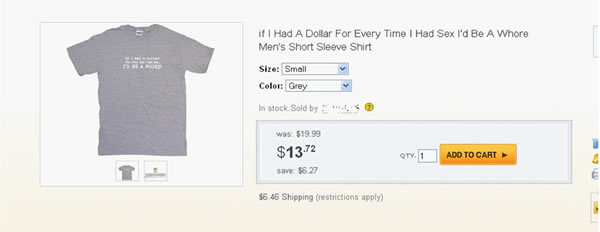
Case #3: Drug Use
-
Description: Marijuana leaf on a hat. The words “marijuana” in the title and product description. Neither drug use nor the drug itself can be part of the content. Because this is a “soft” drug, and use of the drug itself is not shown, the offense is lower.
-
Severity: Low
-
Sanction: Warning. The offensive SKU(s) deleted.

Case #4: Bigotry
-
Description: All forms of bigotry including animosity, hostility, malice, and ridicule of any sect or group of people including any symbol or object conventionally understood as bigoted. The Nazi flag arouses very strong emotions. It is a symbol would be viewed by many people as offensive and symbolizing hatred and bigotry. This is strictly prohibited.
Severity: High
-
Sanction: SKU is deleted and the seller’s account is temporarily suspended.
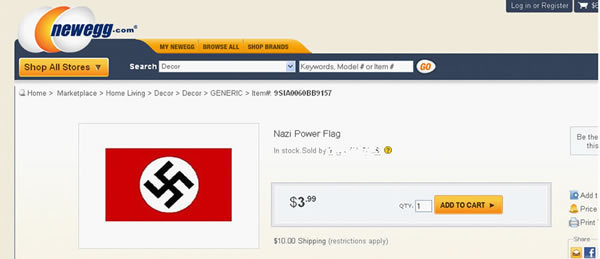
-
Case #5: Nudity
-
Description: Except in rare cases, nudity is prohibited. Any depiction of genitalia is prohibited. In this example, no parts are actually depicted, but are mostly covered up. This is a border-line case. In such cases, getting permission would be prudent.
-
Severity: None, if permission was granted prior to the SKU being created. Medium severity if permission was not received.
-
Sanction: None, if permission was granted prior to the SKU being created. If permission was not received, the SKU will be deleted. In either case, the seller may be asked to remove the nude image as the primary image.

Case #6: Nudity
-
Description: Except in rare cases, nudity is prohibited. Any depiction of genitalia is prohibited. This depicts genitals, and is therefore prohibited.
-
Severity: Medium
-
Sanction: SKU is deleted.
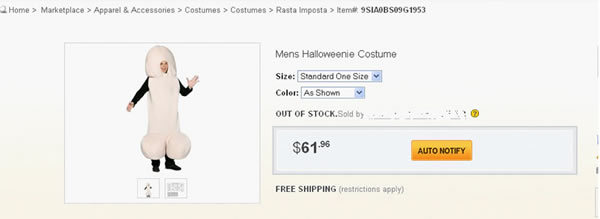
Case #7: Sexuality
-
Description: All depictions of sexual expression are prohibited including drawings and stick figures. This image shows a sexual act.
-
Severity: Medium
-
Sanction: SKU is deleted.
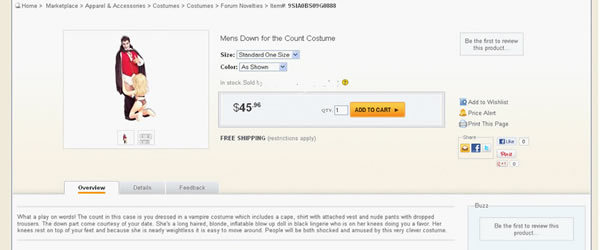
-
Case #8: Prohibited SKU
-
Description: No products that are on the “Prohibited Items List” are allowed. Firearms are on the “Prohibited Items List”
Severity: High
-
Sanction: Suspension or possible account termination. Even if this is a first-time offense, account termination is still a possible outcome.
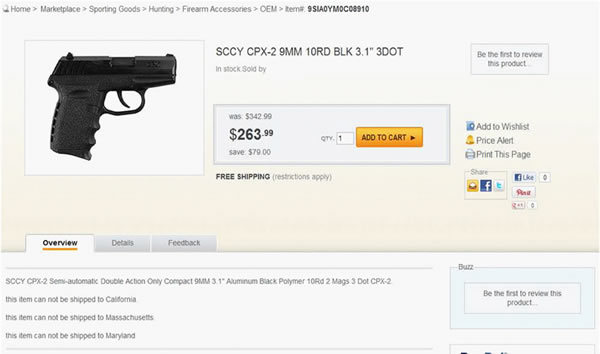
-
-
Case #9: Prohibited SKU
-
No products that are on the “Prohibited Items List” are allowed. Sexual products such as vibrators are prohibited.
Severity: High
-
Sanction: Suspension or possible account termination. Even if this is a first-time offense, account termination is still a possible outcome for prohibited items.
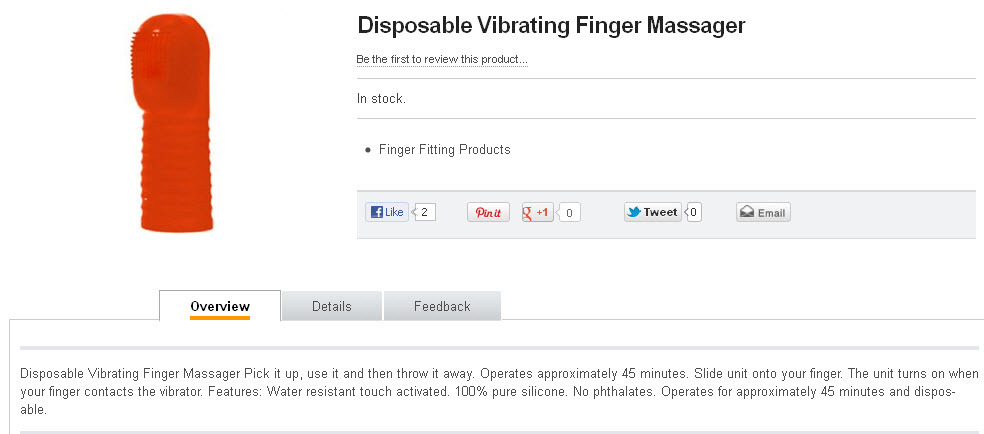
-
Miscategorized SKU Policy
Ensuring that each SKU is properly categorized is an information management issue Newegg takes very seriously. Proper categorization has an impact on search and navigation while also influencing Newegg’s branding. By “categorization” we are referring to the subcategory. Newegg has more than 2,000 subcategories that span across several industries. We provide both taxonomy documentation and seller support to help sellers categorize their SKUs properly.
Properly Categorizing SKUs
The seller is responsible for ensuring that seller creates its SKUs in the correct subcategory. To determine the correct subcategory for a SKU, the seller must refer to the taxonomy. The taxonomy includes a list of all Newegg subcategories, the industries to which they belong, the properties and property values for each subcategory, and information on required and groupby properties. Everything you need is provided in the taxonomy document.
The first step in properly categorizing SKUs is to learn the taxonomy for the industries in which you will be integrating. For example, if you are selling “Fishing Rods,” the proper industry is “Sports Goods.” Once you determine the industry, acquire an understanding of the scope and structure of the Sports Goods industry. You will notice that there are several subcategories that pertain to fishing; you will also notice that there are several subcategories that pertain to boating. Understanding the conceptual layout of the taxonomy for an industry is essential. As you peruse the taxonomy for the Sports Goods industry, you will find that most of it is organized around particular sports. Next, find the subcategories that are relevant to your product. You will notice that Newegg has some subcategories that could be relevant:
- 1. SG – Poles, Tools & Gadgets
- 2. SG – Fishing Rods & Bows
- 3. SG – Fishing Reels
The second step is to examine the specifics for each subcategory to which your SKU could belong by looking at the subcategory structure. The best way to determine whether a subcategory is a proper fit for your SKU is to examine the “Type” property values as in “SGPoles_Type,” “SGFishingRods_Type,” and “SGFishingReels_Type”. Upon examination, it becomes clear that the subcategory “SG – Poles, Tools & Gadgets” is not the correct subcategory. The “SGFishingRods_Type” property demonstrates that the subcategory “SG – Fishing Rods & Bows” is the correct subcategory.
Using the taxonomy document, let’s pretend that you have another SKU that is also a fishing rod, but it also includes a reel. Because you are now aware of the different fishing subcategories, you decide to find the subcategory for Fishing Rod and Reel Combos. However, you do not find it. There are three possible reasons: First, the subcategory exists in another industry, so now you have to find it; second, we just don’t have any taxonomy for fishing rod/reel combos so therefore you can’t sell this SKU; or third, it is not its own subcategory, but it fits into a related subcategory. The structure of the fishing taxonomy shows you that there are two relevant subcategories: one for fishing rods and another for fishing reels. By examining those two subcategories further, you find that the “SG – Fishing Rods & Bows” subcategory has a property called “SGFishingRods_Feature” with a value of “Rod and Reel Combos.” Therefore, all Rod/Reel combos belong in the “SG – Fishing Rods & Bows” subcategory.
The final step is to make sure that you are authorized to sell in the “SG – Fishing Rod & Bows” subcategory. If you are restricted from selling in this subcategory, this means you are not allowed to sell any SKUs that would belong to the subcategory. By looking at the “SGFishingRods_Type” property, you can see that Bows, Bait Casting Rods, Downriggers, Fly Rods, Ice Rods, Spinning Rods, Surf Rods, Trolling Rods, and Spears” are SKUs you cannot sell.
Qualifying Criteria:
In order to determine the appropriate consequences of miscategorizing SKUs, the criteria that will be used to make this judgment must be established. There are four criteria that are considered: First, the specific type of miscategorization based on three scenarios; second, whether the seller is authorized to sell the SKU; third, the number of SKUs miscategorized; fourth, the number of prior incidences. The degree of each offense will be categorized as low, medium, and high. See Table 1 in Appendix A for a table presentation of these criteria. Each criterion is elaborated below:
- 1.The specific type of miscategorization is based on three scenarios:
- A) The correct industry but the wrong subcategory. Whether this is a low or medium offense depends on how far conceptually the miscategorization is. Referring to the fishing rod example above, if the seller had put the fishing rod and reel combo into another subcategory such as “SG – Fishing Reels,” this would be a low offense. However, if the seller had placed the SKU in the subcategory, “SG – Sleeping Bags & Beds”, this would be a medium offense even though the subcategory is still part of the “Sports Goods” industry.
- B) The wrong industry and the wrong subcategory, and SKU is authorized. Referring to the fishing rod example above, if the seller had placed the fishing rod and reel combo SKU into “Toys – Outdoor Toys” in the “Toys Games & Hobbies” industry, this would constitute a medium offense if the seller was authorized to sell in the “SG – Fishing Reels” subcategory.
- C) The wrong industry, the wrong subcategory, and the SKU is unauthorized. Referring to the scenario in 1B, if the seller was restricted from selling in the “SG – Fishing Rods & Bows” subcategory, the offense would be high.
- 2. SKU Authorization. This refers to whether the seller is authorized to sell in the subcategory/subcategories involved. If the proper categorization for a SKU is to a subcategory the seller is not authorized to sell in, this is a violation. The increase in severity is elaborated in the scenarios for the first criterion shown above.
- 3.The number of miscategorized SKUs. This is determined in both absolute and relative terms. The fishing rods example will be used to illustrate criterion. Let us suppose that a seller has a total of 10,000 SKUs, 1,000 of which are fishing rods, all of which are miscategorized. The following are the factors that Newegg would consider in evaluating the degree of offense:
- A) The extent to which the seller is the predominant seller for fishing rods. If there are a total of 1,500 fishing rods on Newegg, the seller’s 1,000 fishing rods carry nearly all the weight. This would constitute a high offense.
- B) The scattering of 1,000 miscategorized fishing rods. If all the 1,000 miscategorized fishing rods were misplaced in the wrong subcategory such as “SG – Fishing Reels” that would be a lesser offense. However, if the 1,000 fishing rods were placed in multiple subcategories across different industries, that would be a much higher offense.
- C) The total percentage of miscategorized SKUs. If the 1,000 miscategorized fishing rods is the only miscategorized SKUs out of 10,000, then this is a lesser offense because only 10% of the seller’s SKUs are miscategorized. However, if Newegg discovers that there are another 1,000 SKUs that are miscategorized, this would bring the percentage of total miscategorized SKUs to 20% which is too high.
- D) The total number of miscategorized SKUs. If a seller had a total of 100 SKUs and all of them were miscategorized, this would be a lesser offense than a seller with 10,000 SKUs with only 1,000 miscategorized SKUs. Any number over a 1,000 SKUs is important to Newegg and can either be a help or a detriment.
- 4. Aggravating factors. If the miscategorized SKU(s) involved simultaneously violate another content policy, this will create an aggravating factor that will increase the severity rating of the offense. Another aggravating factor involves the importance of the subcategories in question. Subcategories that are particularly important for Newegg will increase the severity rating of the offense, whereas there may be no changes in severity for less important or strategic subcategories. For example, miscategorization that affects the “Memory (USB Flash Drive)” subcategory would be an aggravating factor contributing to a higher severity rating than a miscategorization involving the “Umbrellas” subcategory.
- 5. The number of prior incidences. An “incident” is defined as each time Newegg has determined that a seller has had one or more SKUs that violate our content policy. Content policy includes not only the miscategorized SKU policy, but also our offensive content and inaccurate information policies. However, an incident in one policy does not contribute to an incident in another policy. There is a maximum of one incident per day that can be counted for each seller. The same incident may be counted twice if sufficient time has elapsed. An incident can be defined in terms of days or it can be more conceptual such as “miscategorized SKUs in the HL – Decor subcategory”. The following factors are considered:
-
- A) First-time offense. This is applied to the first time a seller integrates with us, as well as the first time any part of an industry is opened up to the seller. The severity is low.
- B) Second-time offense. The severity is low.
- C) Third-time offense. The severity is medium.
- D) Multiple offenses. The severity is high.
Table 1. Qualifying Criteria

*Aggravating factors may include: violation of content policy and/or importance of subcategory involved
Severity may be increased/decreased based on: number of prior incidences, number and % of miscategorized SKUs
Sanctions:
Each incident that we establish will result in an email and/or call to the seller with information that specifies the details of the incident, the policy that is violated, the degree of severity, the sanction, the seller’s role in rectifying the violation, and terms for reconciliation. The offenses from the criteria above will be used to determine the sanctions Newegg will impose. Although two incidences of high offense may not be severe enough to warrant suspension or termination, it really depends on the severity of the offense. See Table 2 in Appendix A for a table presentation of the sanctions. The sanctions that Newegg will impose are specified below.
- 1. Unofficial Warning. This usually occurs for a first-time offense that is of low severity and that can be quickly and easily remedied.
- 2. Official Warning. This usually occurs for first-time offenses that may be low in severity, but are not quickly and easily rectified.
- 3. Deactivating SKUs. This usually occurs for any medium or high offense in order to take the offending SKUs off our website until we rectify the situation.
- 4. Deleting SKUs. This occurs when there is no easy way to rectify a situation other than to start over again. This may also occur if the seller cannot be trusted to rectify the situation in a timely manner.
- 5. Deauthorization. This means the seller will lose authorization to sell certain subcategories or will lose the ability to sell SKUs by a particular manufacturer.
- 6. Suspension. This means all the seller’s SKUs will be removed from our website, although they will remain in our system.
- 7. Termination. This means the seller’s account is terminated, and the seller will no longer sell on Newegg.
Table 2. Sanctions

NOTE: Nothing in this policy shall limit Newegg’s rights to sanction or terminate a seller for violation of the Newegg Marketplace Seller Agreement. The Agreement shall control to the extent of any conflict between this policy and the Agreement.
Inaccurate Content Policy
This policy describes situations in which inaccurate content may arise. Our policy is that all content must be entirely accurate. These examples are not exhaustive, but are used for illustrative purposes only in order to prevent them from occurring.
Scope:
The inaccurate content policy covers all content for a SKU including the website short title, product description, images, videos, logos, property values, manufacturer names, manufacturer part numbers, and UPC. This document specifically addresses the accuracy of the content. Another area this policy covers is nonsensical information. Nonsensical information not only fails to provide useful information for customers, but also confuses them.
Scenarios:
- 1. Mismatch between the information in the website short title, image, and property value. There is no easy for to determine which information is accurate. Did the seller just upload the wrong image? Is the image correct, but the product description is for the wrong SKU? The only way to resolve this issue depends on the UPC or Manufacturer Part # for the SKU.
- 2. The product description gives inaccurate information about the product. For example, a product description for a SKU may state that a free accessory is included, but this is untrue. This usually happens when sellers are trying to include a free item to promote their product. However, Newegg Marketplace is strict when it comes to bundling. If the SKU normally does not include any additional accessories or items, the seller should create a different SKU for that bundle. Another scenario is when the product description is for the wrong SKU.
- 3. Wrong manufacturer name. The manufacturer name is required to create a SKU because we use this information to uniquely identify a SKU. Because some manufacturers have similar names, it is important that the seller choose the correct name.
- 4. Wrong Manufacturer Part Number (MPN). This is usually required to create SKUs. We rely on this information to uniquely identify a SKU. It is important that sellers do not modify the manufacturer part number they receive from the manufacturer for their SKUs. The most common error occurs when the syntax is modified. For example, some manufacturer numbers include dashes and the seller creates the SKU without the dashes. Sometimes sellers use their seller part number as the manufacturer part number; there are cases where the seller uses the UPC number as the manufacturer part number. Another common case is when the seller appends an “-R” to the manufacturer part number to specify that the item is refurbished. Any changes to the manufacturer part number received from the manufacturer specifications are prohibited.
- 5. Wrong UPC. This is usually required to create SKUs. We use this information to uniquely identify a SKU. It is important that sellers do not modify the UPC they receive from the manufacturer. The most common error occurs when an Excel feed is used where the setting eliminate leading zeros from numbers in cases where the UPC code starts with a zero.
- 6. Nonsensical information. All information should be understandable for the customer and be appropriate. The most common occurrence is found with information for sizes and colors. Due to the wide variance of values for properties like size or color, normalizing the data is imperative for sellers. Another common occurrence is when the wrong information is supplied for a property. Another common occurrence is when the seller uses images that are fuzzy or are fillers such as “Image Coming Soon”.
- 7. Duplicate listings of the same SKU. As previous scenarios have mentioned, our system will create separate listings for the same SKU if the UPCs, Manufacturer Name, or Manufacturer Part # differ. Sometimes this happens when sellers modify the Manufacturer Part # of the same SKU to list a separate compatibility. Also see the section on how to list compatibility information. Another situation when this happens is when a seller creates more than one listing by creating SKUs that come in different packs, such as the same SKU that comes in a pack of 2 or pack of 10. Creating different packages for the same of creating separate listings is also prohibited. There are two exceptions: if each package has a separate UPC, or if there is a property called “selling unit.”
- 8. Misleading Information/Portrayal of Prohibited SKUs.. Any attempt to mislead a customer to think that a SKU could be something other than what it really is. In addition, any portrayal of a SKU that would violate the offensive content policy or Prohibited Items List is a violation. Sometimes this happens when a legal product is portrayed as something illegal, or when a toy is portrayed to look like the real object.
Examples: Case Studies
Case #1: Mismatch/Inconsistencies
Description: There are inconsistencies between the information in the title, image, and property values. Some of the information states it is “Black Matte”, other information specifies that it is “White.”
Discussion: This error is due to the seller using the wrong manufacturer part number. The manufacturer part number for the white SKU is “PowerDX-1700W”; for the black SKU the MPN is “PowerDX-1700B”. To fix this error, we must determine if the seller intends to sell the white- or black-colored SKU.
Severity: Medium. The customer is unlikely to buy this SKU because they will not know what color they will get; furthermore, it is possible that the seller will ship the color the customer did not want which increases the number of RMA’s and leads to more customer complaints.
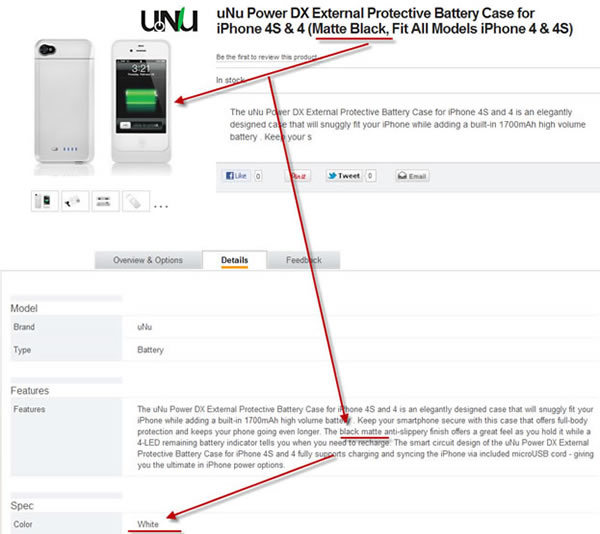
Case #2: The product description gives inaccurate information about the product
Description: This is the wrong information for the SKU. The product description is for a table lamp, but what the SKU is just a lamp shade.
Discussion: The cause of this case is that the seller mistakenly supplied the wrong product information.
Severity: High. The customer will not know whether they are buying a lamp shade or a table lamp. The customer will be sufficiently confused that they will not purchase this item.
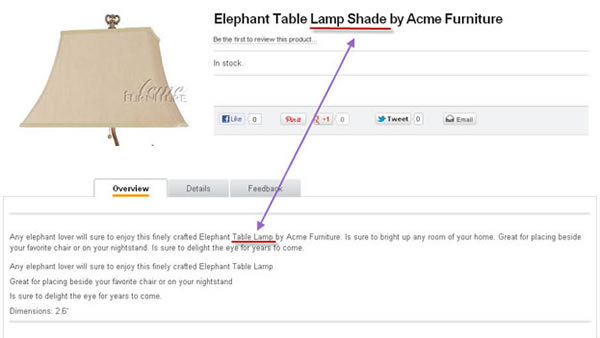
Case #3: Wrong Manufacturer Name
Description: The seller selected the wrong manufacturer name. When the wrong manufacturer name is selected, the wrong manufacturer logo appears on the product images.
Discussion: The seller selected “Velocity Micro” who is a manufacturer of tablets, when they should have selected “Velocity USA, Inc.” who is a manufacturer of bicycle accessories. Sometimes different manufacturers have similar names, so it is important to get this information correct.
Severity: Medium – High. The level of severity depends on whether the wrong manufacturer name is an important manufacturer for Newegg.

Case #4: Wrong Manufacturer Part Number (MPN).
Description: The table below shows three SKUs that the seller tried to provide the wrong MPN when creating the SKU.
Discussion: In this case, the MPN is correct in the alphanumeric characters, but it is wrong because the seller did not include the dashes. There are many MPNs that use dashes, and so it is essential that the seller not modify the syntax they receive from the vendor.
Severity: Medium – High. Using the wrong MPN sometimes results in the creation of duplicate listings of the same SKU because the system thinks that they are different SKUs, when in reality, they are the same SKU. This also makes it nearly impossible to group SKUs together based on a variation in size, color, material, or other criteria. This causes the customer to see multiple listings on the website and makes it difficult for the customer to select variants based on color or size.

Case #5: Wrong UPC
Description: The example below shows correct UPCs for two SKUs. The two SKUs are watches – one with a silver color and the other a gold color.
Discussion: This case shows the importance of using the correct UPC. The UPC is a unique identifier for SKUs. This example shows two different SKUs that are similar in every respect except color. If the UPCs were incorrect, it would be more difficult for customers to find a different colored watch.
Severity: High. Wrong UPC makes increases the probability that duplicate listings will be created for the same SKU.
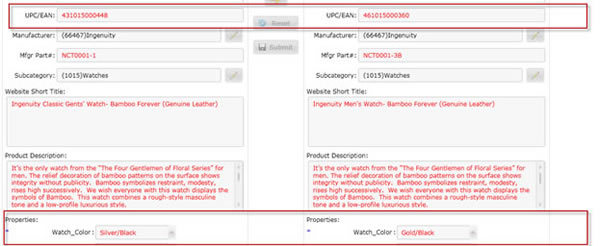
Case #6: Nonsensical Information.
Description: This example shows a costume size values of “X” and “X-Large 4T-6T”.
Discussion: This is most likely a mistake, but it also is nonsensical because customers will not understand what “X” is. They may also be confused with the value “X-Large 4T-6T.” It is important that content is informative for customers. The best way to ensure this is to make sure the content is an industry standard or common practice.
Severity: Low – Medium. Information that cannot be understood easily by customers adversely impacts the shopping experience.

Case # 7: Duplicate listings of the same SKU
Description: This example shows a seller who created two separate listings for the exact same SKU. All of the information is nearly identical including the manufacturer name, subcategory, website short title, and product description. The only difference is that the manufacturer part # for one of the SKUs begins with “PO”. Therefore, our system thinks these are two different SKUs, when, in fact, they are really the same SKU.
Severity: Medium. Duplicate listings are redundant, clutter our search results, and confuse customers who are unable to discern the differences between the SKUs.
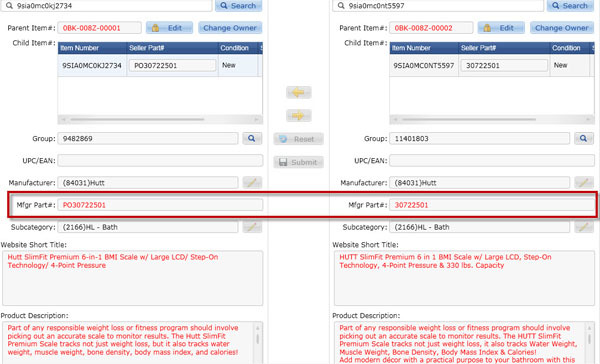

Case # 8: Duplicate listings of the same SKU
Description: This example shows the same seller who created two separate listings for the exact same SKU. Two SKUs were created because of the slight difference in the MPN. Although both of these SKUs list different lists of compatibility, the fact is that the SKU is compatible with all Apple products. Creating separate listings to list different compatibilities is strictly prohibited.
Severity: Medium-High. Duplicate listings are redundant, clutter our search results, and confuse customers who are unable to discern the differences between the SKUs.
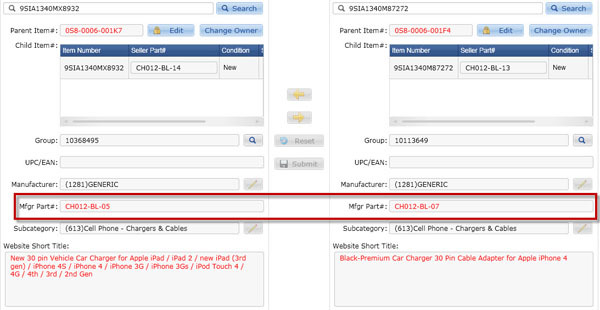
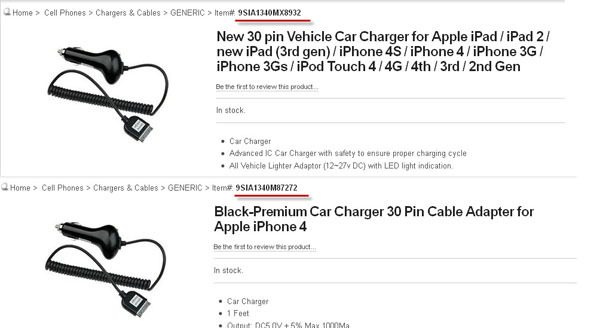
Case # 9: Duplicate listings of the same SKU
Description: The seller created duplicate listings by creating two different listings with a different package size. One is a 6-pack and the other a 2-pack. This is strictly prohibited.
Severity: Medium-High. Duplicate listings are redundant, clutter our search results, and confuse customers who are unable to discern the differences between the SKUs.
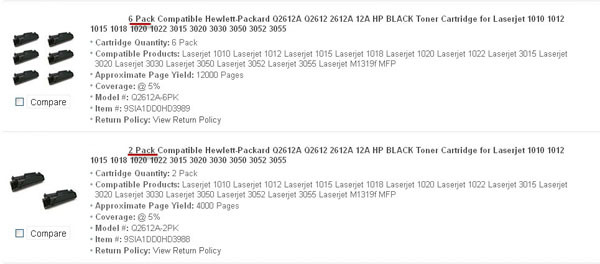
Case # 10: Misleading Information/Portrayal of Prohibited SKUs
Description: This is an airsoft gun, but the image and website short title make it look like it is a real .44 Magnum. Furthermore, the description describes it as a real firearm, and not an airsoft gun. Only at the very end of the product description, does it state that this is airsoft, which may be unnoticed by some viewers. Guns are listed in the Prohibited Items List. Sellers must be careful that they do not attempt to portray a SKU that would violate our Prohibited Items Policy if it were real. Severity: Medium-High. This portrays a fake gun as if it were a real gun. Firearms are prohibited as well as their depiction (including image, title, and description).
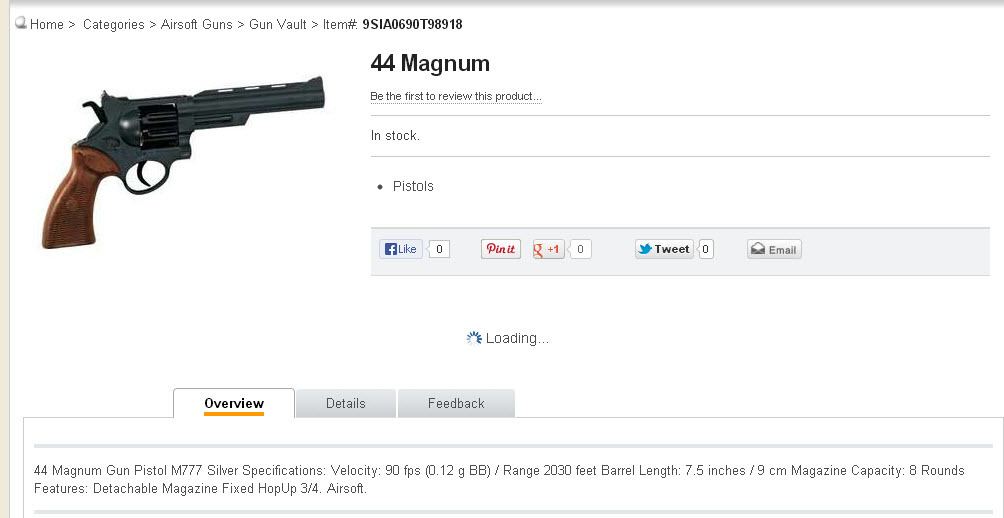
Website Short Title Policy & Guidelines
Website short titles are the titles that appear on the product pages and in search results. Website short titles are one of the most important pieces of content for customers because it tells them what the SKU is. Therefore it is essential that sellers are more conscientious about the website short title. Many times a customer may only read the website short title and glance at the SKU image before making a decision on whether it is an item they may want to purchase. Website short titles that are less readable or do not clearly communicate what the SKU is have a much lower chance of being purchased.
Must Do:
- 1. Keep it short. Only include enough information for the customer to determine what the item is
- 2. Proper capitalization, spelling, and punctuation
- 3. Use special syntax and characters such as parentheses, backslashes, dashes, and plus signs sparingly and only when necessary.
- 4. Adhere to our Offensive Content Policy.
Nice to Do:
- 1. Include brand name or manufacturer name
- 2. Include manufacturer part number
- 3. Include size/color/class or any other key distinctive information except if you are grouping
- 4. Avoid excessive punctuation
- 5. Include the following information in the title in the most logical order: [Brand/Manufacturer Name] [Model #] [Product Name] [Most important feature]
- 6. Include compatibility information, but it must adhere to our specifications on compatibility. See our section on compatibility
Must Not Do:
- 1. Do not include product information that is more appropriate for the product description such as a list of features, packaging/shipping information or long descriptive information
- 2. ALL CAPS are prohibited except for the manufacturer/brand name and acronyms
- 3. Do not include vague words such as “beautiful,” “unique,” “lovely,” “new”, “more”, etc.
- 4. No synonyms or redundant words to describe the item. For example, “Battle Ship Boat” and “Remote Control RC Helicopter” is prohibited
- 5. Do not include shipping information
- 6. Do not include information that is applicable to a specific seller. For example, “sold by NeweggStore123”
- 7. Do not include promotional or marketing information
- 8. Do not use unnecessary syntax or punctuation
- 9.. Do not include the condition of the SKU by using words such as “Refurbished,” “Recertified,” “Remanufactured,” “Reconditioned” “New”
- 10. Refrain from using undescriptive titles
- 11. Do not create incomplete titles
- 12. Do not include any price information
Must Not Do Examples
Example #1: Do not include product information that is more appropriate for the produt description
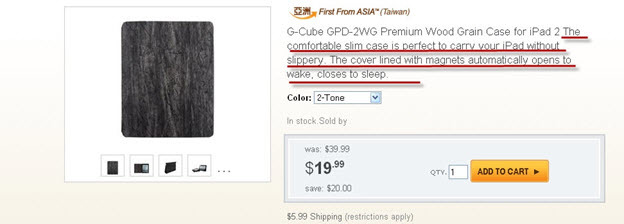

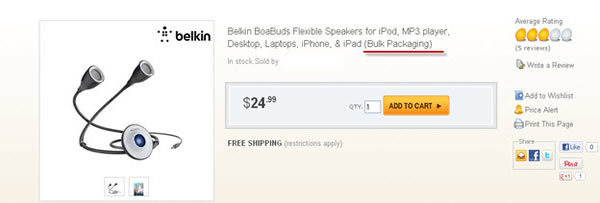
Example #2: ALL CAPS are prohibited except for the manufacturer/brand name
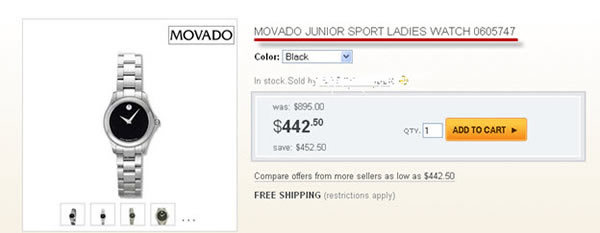
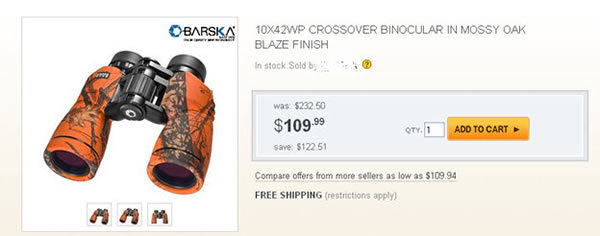
Example #3: Do not include vague and superfluous words
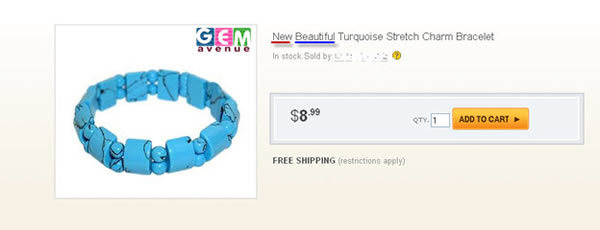
Example #4: No synonyms or redundant words to describe the item
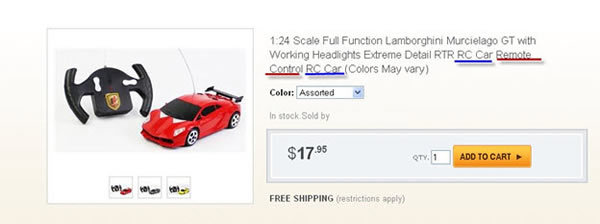
Example #5: Do not include promotion or marketing information or any information that may be only applied to your account. There's other ways to do that through promotion text function in Seller Portal.
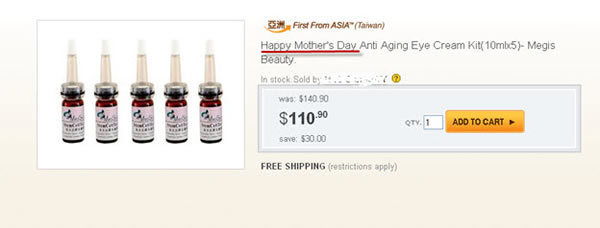
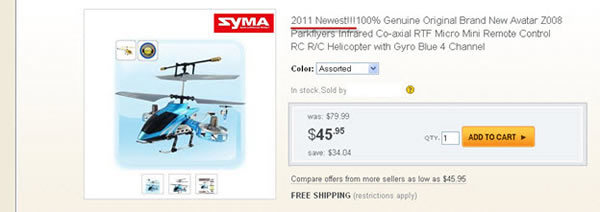
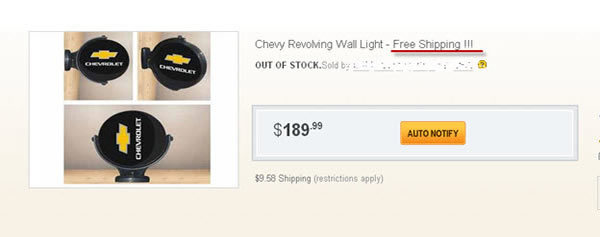


Example #6: Do not use unnecessary syntax or punctuation


Example #7: Do not include the words “Refurbished,” “Recertified,” “Remanufactured,” “Reconditioned” or other similar words to specify used or refurbished SKUs. Instead, mark the item as "Refurbished" condition in Item Condition field and our system will automatically display the proper presentation on website.
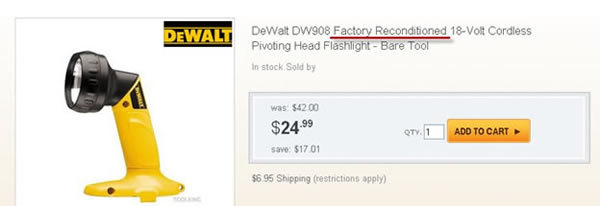
Example #8: Although “telescopes” is spelled correctly, it is considered a misspelled word because this SKU is for only one telescope. The plural suggests that there is more the SKU is for more than one telescope.
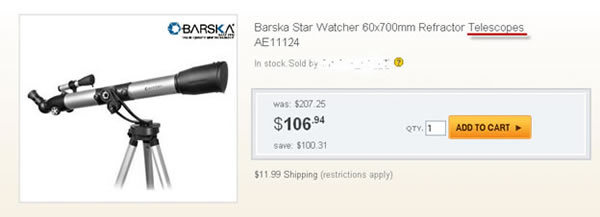
Example #9: Refrain from using undescriptive titles
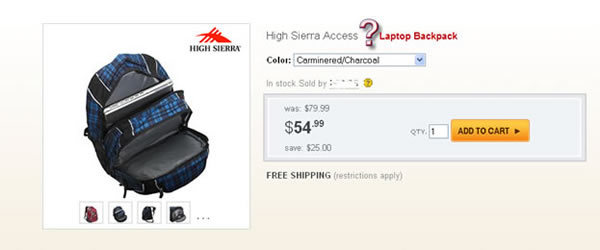
Example #10: Do not create incomplete titles
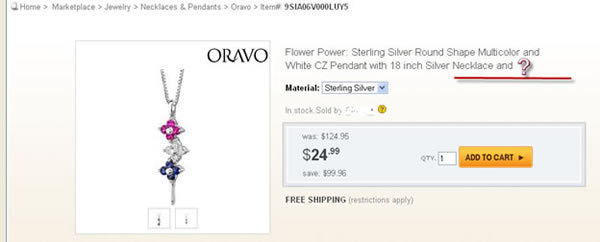
Good Title Examples:
Example #1: Include the following information in the title in the most logical order: [Brand/Manufacturer Name] [Model #] [Product Name] [Most important feature]
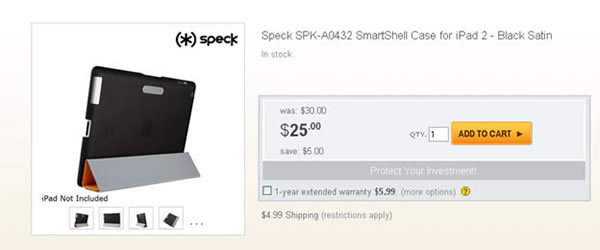
Example #2: Include the following information in the title in the most logical order: [Brand/Manufacturer Name] [Model #] [Product Name] [Most important feature]
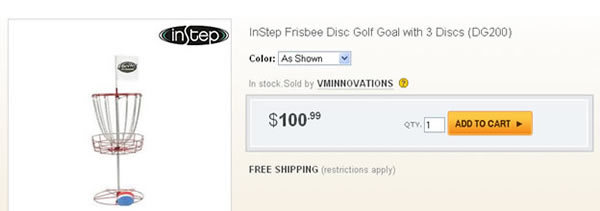
Example #3: Keep it short. Only include enough information for the customer to determine what the item is
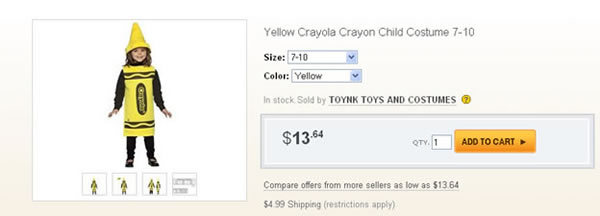
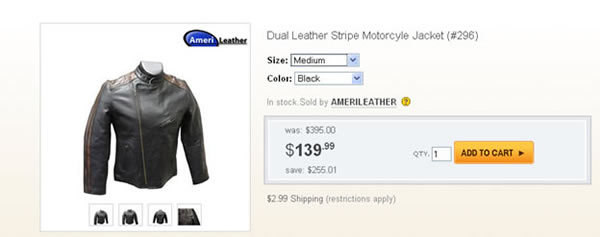
Example #4: Use special syntax and characters such as parentheses, backslashes, dashes, and plus signs only when necessary.
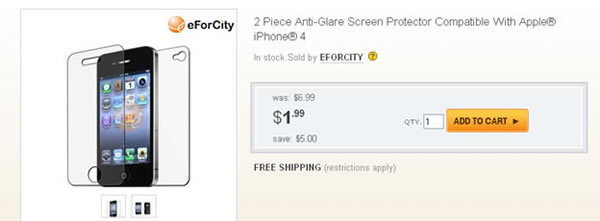
Compatibility
There are many products that have compatibility information. Some examples include car parts, printer ink, and consumer electronics accessories. Compatibility information is important for customers who want to know whether the product is useful for them. Our policy strives to ensure that customers can find SKUs that match their compatibility specifications as well as ensure that they can easily determine from reading the search results or the product page whether a SKU is a match. However, we want to ensure that compatibility information does not become an eye sore for customers and does not unnecessarily crowd out other important information.
These rules below specify the conditions for including compatibility information in the website short title:
- 1. The website short title may include a listing of compatibility information only if its character count does not equal half of the character count of the website short title. If the compatibility information has a character count equal to half that of the rest of the website short title, it is too long. Such a list must be exhaustive and not partial.
- 2. The website short title should summarize compatibility information by listing a type or range of compatibility, especially if the compatibility list is too long.
- 3. If a website short title includes a listing of compatibility, it must be exhaustive and not partial. The only exception to this rule is when it is prudent to list the most common or popular compatibility information. In those rare circumstances, a partial listing may be used.
- 4. In most circumstances, compatibility information in the website short title should be listed at the end of the website short title.
- 5. You must follow the rest of our Website Short Title Policy & Guidelines
Guidelines for compatibility information:
- 1. If a subcategory includes a property for compatibility, it should be the first place compatibility information is listed. A property field is limited to 2000 characters.
- 2. The product description is an appropriate place to specify compatibility information. Please follow our Product Description Policy and Guidelines
Good Examples:
Example #1: The website short title may include a listing of compatibility information only if its character count does not equal half of the character count of the website short title.
Description: The iPhones this SKU is compatible with is exhaustive and is short enough to be included in the website short title.

Example #2: The website short title should summarize compatibility information by listing a type or range of compatibility, especially if the compatibility list is too long.
Description: Listing all of the compatibility information would be too long to include in the website short title. Instead, it is more appropriate to summarize the compatibility: “2004 – 2008 Mazda”. The customer can then check the product description or product specifications for more specific compatibility information.
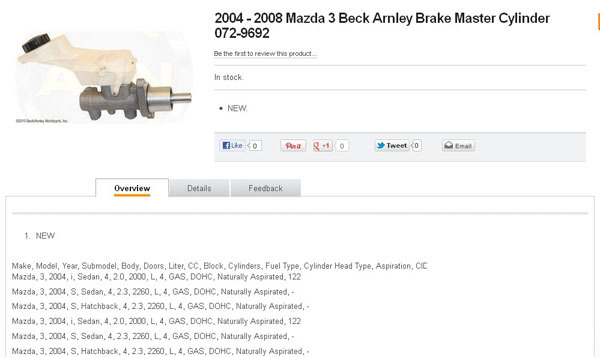
Example #3: If a website short title includes a listing of compatibility, it must be exhaustive and not partial.
Description: This SKU is compatible with iPad 2, 3, & 4. Because the compatibility information is short and is an exhaustive list of the compatibility, it is appropriate to include this in the website short title.
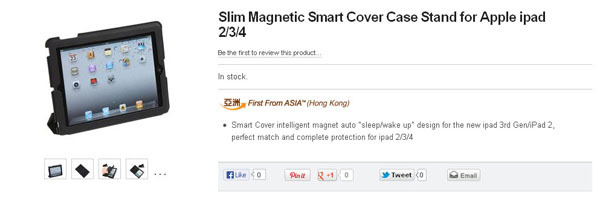
Example #4: In most circumstances, compatibility information in the website short title should be listed at the end of the website short title.
Description: Although the compatibility information in this example is short, including compatibility information at the end of the website short title makes it more readable for customers.

Bad Examples:
Example #1: The website short title may include a listing of compatibility information only if its character count does not equal half of the character count of the website short title.
Description: The character count of the compatibility information is equal to half of the rest of the website short title. Also, the compatibility list is redundant enough that specifying a range of “1989-1998” is sufficient for the website short title. More specific information can be included in the product description.
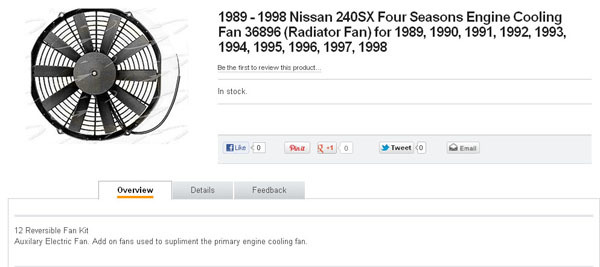
Example #2: You must follow the rest of our Website Short Title Policy & Guidelines.
Description: The website short title includes a misspelled word, “Repaire”.
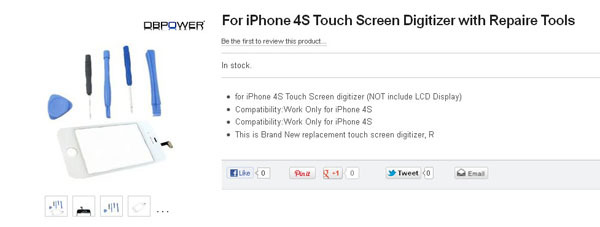
Product Description Policy and Guidelines
Product descriptions are displayed on the “Overview” tab on the product page. The purpose of a product description is to provide substantive and informative information for customers. Most of the content in product descriptions is text, but we allow a maximum of two videos. Every seller shares the same product description for each SKU; therefore, seller-specific information is prohibited. These guidelines have been provided to help you create product descriptions that meet Newegg’s quality standards.
Visual Presentation and HTML Restrictions
Not only is substantive content important, but the visual presentation of the content is also necessary. The visual presentation is controlled by the use of HTML tags. HTML tags must be well-formatted (all open tags must be closed, including <p> and <li>). Most sellers are restricted to the following HTML tags: <ol>,<ul>, <li>,<br>, <p>, <b>, <i>, <u>, <em>, <strong>, <sub>, <sup>. In some cases, a seller may be allowed to use more HTML tags as well as CSS. HTML encoding characters should be used sparingly.
Must Do:
- 1. Enter a detailed description featured on the product page. The product description should contain enough information to describe the product and be informative enough for a customer to make a purchasing decision.
- 2. Ensure that the product description is the correct description for the SKU.
- 3. Ensure the visual presentation makes the text readable and makes it easy for customers to efficiently find pertinent product information.
- 4. Follow HTML allowances and restrictions. Only <ol>,<ul>, <li>,<br>, <p>, <b>, <i>, <u>, <em>, <strong>, <sub>, <sup> are allowed. HTML must be well-formatted (all open tags must be closed, including <p> and <li>).
- 5. Adhere to our Offensive Content Policy.
- 6. Use HTML encoding characters sparingly.
- 7. Use proper grammar, spelling, and punctuation to ensure the writing is clear.
- 8. Obtain permission from Newegg before including any disclaimer or other legal information.
Nice to Do:
- 1. Include variant information that was left out of the title due to grouping. The most typical information is usually color and size.
- 2. Use proper spacing and formatting such as bold, underling, or italics formatting and/or underlining to clearly demarcate “Features” and “Specifications”
- 3. Use writing style that fits the character of the product and is tailored to a specific customer base.
- 4. Include manufacturer and brand information if it provides good information about the product.
- 5. Provide a product video. See our Product Image and Video Policy for more details.
- 6. Enroll in program that allows you to provide enhanced content by being less restrictive with html tags and allows for CSS formatting.
Must Not Do:
- 1. Do not include price, shipping, or warranty information in the product description.
- 2. Do not exhort the customer to use particular search terms.
- 3. Do not include URLs or mention other websites. This includes URLs to websites with warranty support, compatibility information, product manual, or data sheet.
However, a URL for downloading a driver or application that is required for the use of the product is allowed if it does not point directly to an executable file (.exe); it may be a URL to a website where they can find the download link. - 4. Do not mention other products. You may mention that a particular product is part of a particular line or family of products, but you cannot mention specific products.
- 5. Any attempt at cross-selling is strictly prohibited.
- 6. Refrain from product descriptions that use excessive filler and marketing fluff.
- 7. Refrain from promotional/retail jargon.
- 8. Do not use unconventional characters as bullet points.
- 9. Refrain from using bold, italics, or underline formatting other than for headers or the product titles, or “must know” information.
- 10. Do not include any information that is seller-specific including RMA policies.
- 11. Do not create product descriptions that do not provide enough product information.
- 12. Do not refer to holidays unless a SKU is closely associated with a particular holiday
Must Not Do Examples:
Example #1: Do not include price, shipping, or warranty information in the product description.
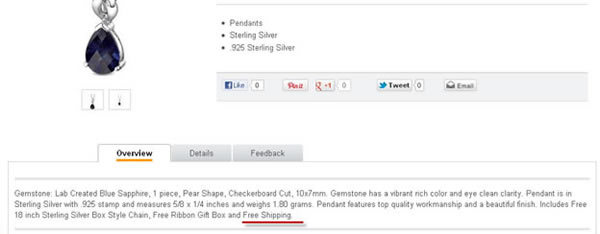
Example #2: Do not exhort the customer to use particular search terms.
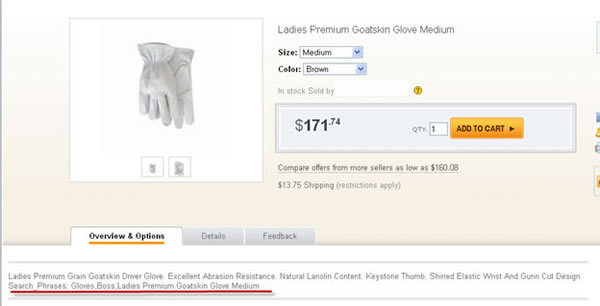
Example #3: Do not include URLs or mention other websites.
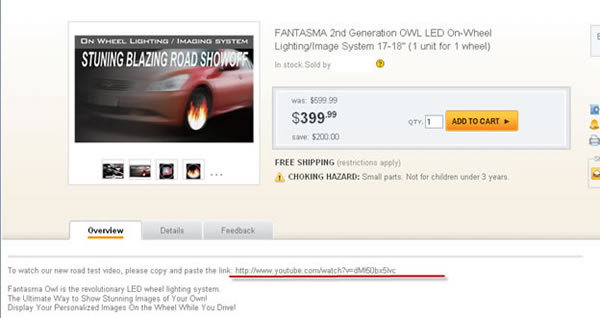
Example #4: Do not include any information that is seller-specific
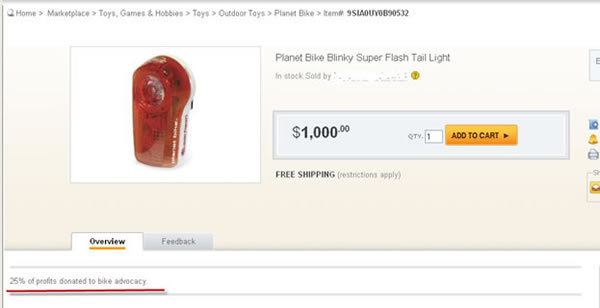
Example #5: Any attempt at cross-selling is strictly prohibited.
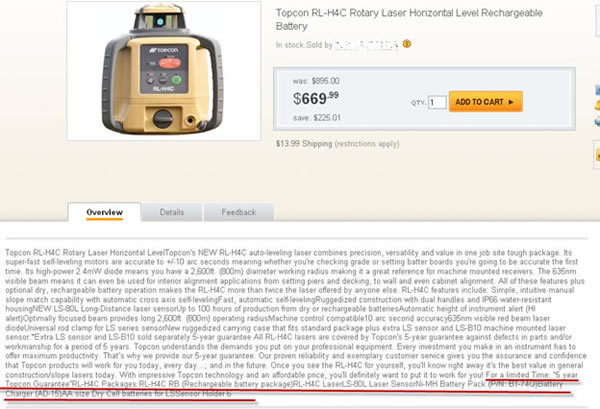
Example #6: Use proper grammar, spelling, and punctuation to ensure the writing is clear.
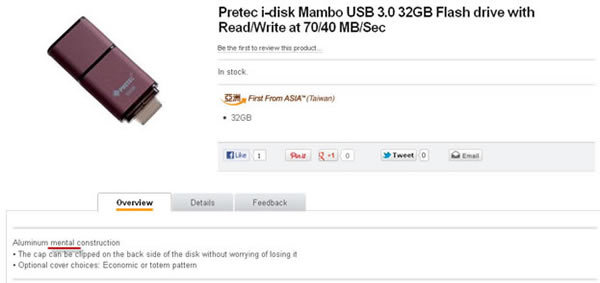
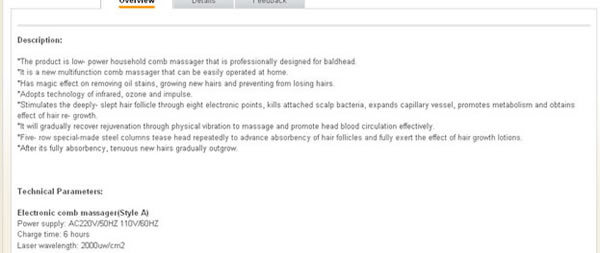
Example #7: Ensure that the product description is the correct description for the SKU.
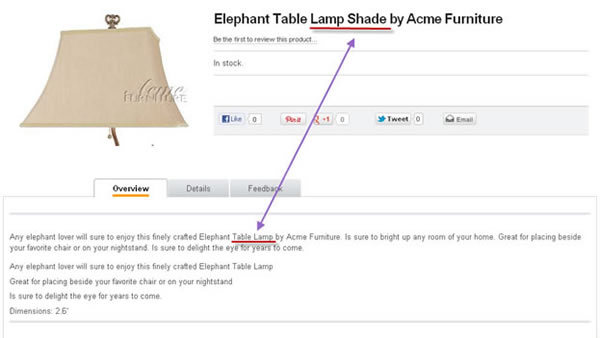
Example #8: Do not create product descriptions that do not provide enough product information
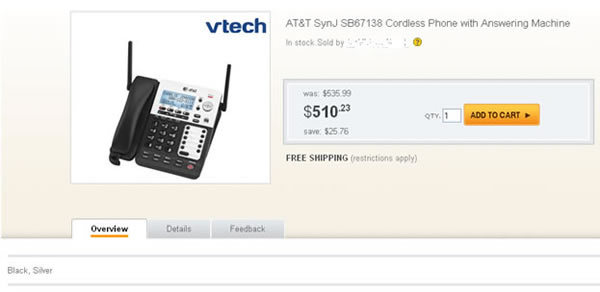
Example #9: Do not refer to holidays unless a SKU is closely associated with a particular holiday
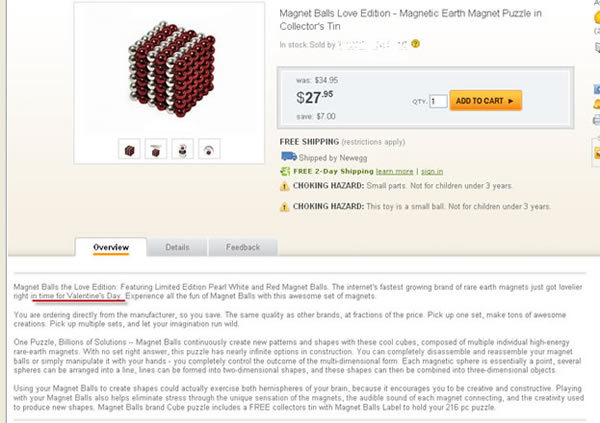
Example #10: Refrain from product descriptions that use excessive filler and marketing fluff.
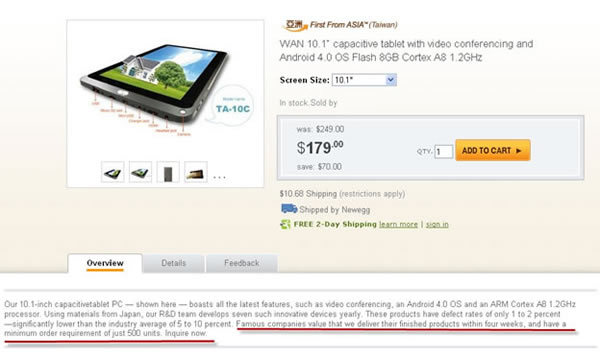
Example #11: Do not include any information that is seller-specific including RMA policies.
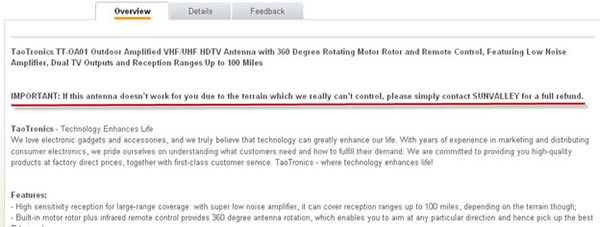
Good Examples:
Example #1: Use writing style that fits the character of the product and is tailored to a specific customer base.
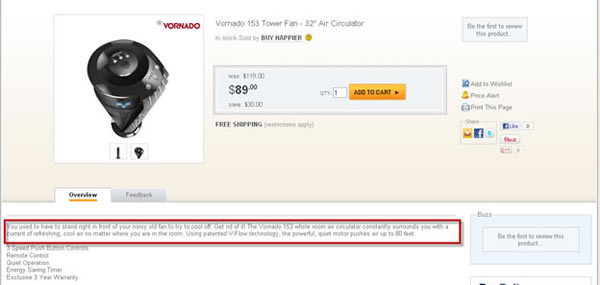
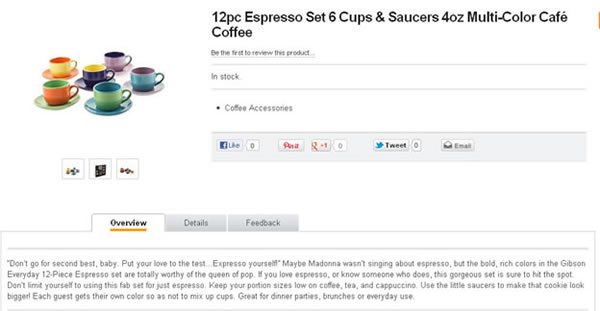
Example #2: Include manufacturer and brand information if it provides good information about the product.
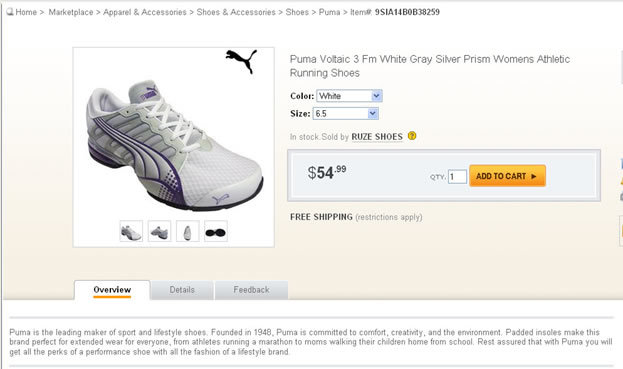
Example #3: Ensure the visual presentation makes the text readable and makes it easy for customers to efficiently find pertinent product information.
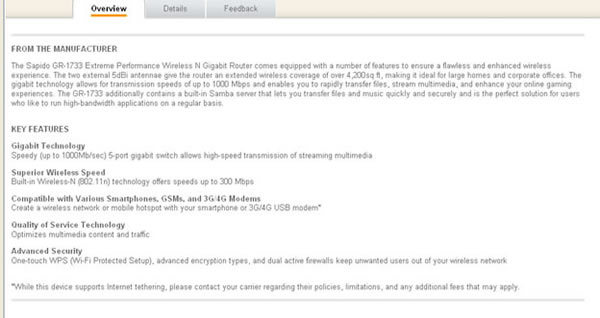
Example #4: Enroll in program that allows you to provide enhanced content by being less restrictive with html tags and allows for CSS formatting.
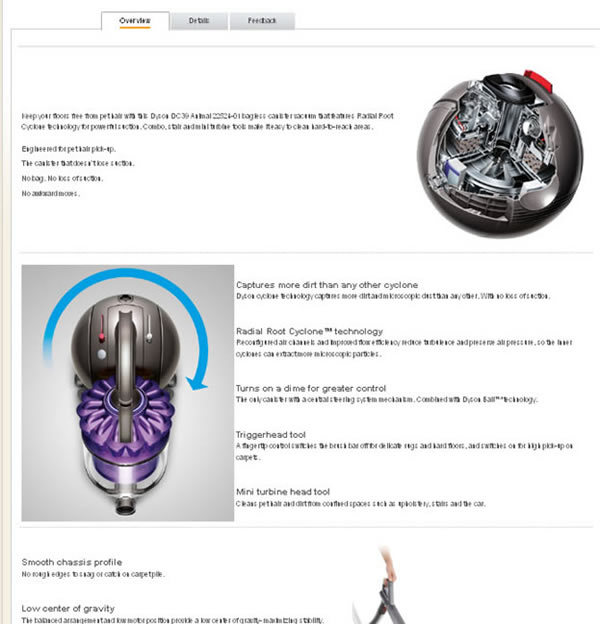
Content Ownership - Modifying Existing SKU Content
Content Championship denotes ownership rights to the content of a SKU. Typically, Content Championship belongs to the first Marketplace Seller who creates the content. The system will only allow the Seller with Content Championship to make edits. If a different Seller tries to modify existing content for a SKU that they do not have ownership rights to, the system will ignore it and not allow you to make the update. Newegg may transfer Content Championship to a different seller if it is deemed that the seller has better quality content. If a seller wishes to correct or update content for which they do not have ownership rights to, please request a transfer in Content Championship by emailing the Marketplace Content Team at mktp.content@newegg.com. Please note, Newegg reserves the right to make corrections or enhance any content provided by Sellers. Additionally, if a SKU is sold by Newegg.com, Content Championship is retained by Newegg and may not be transferred to individual Marketplace Sellers.
Product Image and Video Policies and Guidelines
Product images appear on the product pages and in search results. Videos appear only on the product page. Images and videos convey important information to customers about a product that is not as easily communicated with textual information. There are many instances when a customer may be able to identify a product by examining only images or a video. High quality images and videos support the customer’s decision-making process, whereas poor quality images and videos detract from it. The seller is responsible for ensuring that the images and videos for their SKUs they supply to Newegg are compliant with this Product Image and Video Policies and Guidelines document.
Product Detail Page Ownership and Image Restrictions
When a detail page is created, it becomes a permanent catalog page on Newegg.com that will remain even if the original content creator's inventory sells or if their Seller account becomes deactivated. Additionally, when you add your copyrighted image to a detail page, you grant Newegg and its affiliates a non-exclusive, worldwide, royalty-free, perpetual, irrevocable right to exercise all rights of publicity over the material.
Other sellers can list their items for sale against product pages that you have created or added your copyrighted images* to. (Please see #3 under Image Requirements section below for more on this.)
Image Requirements:
- 1. Adhere to Copyright Law. Supply only images you have acquired legally. Do not supply any images to which you do not have legal rights.
- 2. Every image must meet two of these criteria: 640 pixels wide; 480 pixels high; maximum 10MB file size. High quality images are strongly recommended as this will assist customers with their shopping experience.
- 3. Images must be clear, borderless, and free of watermarks, logos, and extra text. Images should not include copyright or seller-specific information.
- 4. Every image must be the actual image of the product. No blank images or fillers such as “Image Coming Soon” are allowed. See our Inaccurate Content Policy for more information.
- 5. Do not supply identical images.
- 6. Images must have an appropriate background. Usually a white background looks the best.
- 7. Ensure that the image does not portray anything contradictory to the product specifications including the website short title and product description. The most common error is that the SKUs color does not match the information given in the specifications. See our Inaccurate Content Policy for more information.
- 8. Adhere to our Offensive Content Policy.
- 9. An image of a real person, body parts, or model must be legal.
- 10. Each image must not contain a collage of images. However, a collage is appropriate if it shows important variances such as color or size/dimensions.
Primary Image Requirements:
- 1. Be conscientious of the importance of the primary image. The primary image is the first image of a SKU the customer sees and is usually the image that appears in search results. In many instances, the primary image is the only image a customer sees despite the availability of other images for the SKU.
- 2. According to our offensive content policy, certain images are allowed, but are prohibited from being the primary image. Please refer to our Offensive Content Policyfor more information.
- 3. Any images that show a real person, body parts, or a model are strictly prohibited from being the primary image.
- 4. Do not show a collage of images as the primary image.
Image Recommendations
- 1. Include an image of accessories that are included with the product (ex. gift box, remote control, etc.) only if they are important for customers to see.
- 2. When appropriate, use labels on an image to identify important parts or features.
- 3. Include an image that shows the product’s scale. This is usually achieved using models, body parts, rulers, or scales.
- 4. Include a sizing or conversion chart image for SKUs that have unconventional sizes (ex. costumes). Obviously, the text must be readable.
Video Requirements:
- 1. The video must be substantive and informative. Videos must not be purely lifestyle commercial. See the videos on the following Product Tour for a good example.
- 2. Minimum resolution of 1280 x 720
- 3. Accepted video formats: mp4, avi, wmv, and flv. URLs are not accepted, as we require video files for our own hosting purposes.
- 4. The video must not merely show different views or just show what the item looks like on display. See this video for an example that violates this requirement: http://www.youtube.com/watch?v=laTZzL-5O-Q&feature=plcp
- 5. All videos must adhere to our Offensive Content Policy.
- 6. Videos must not include any of the seller’s information.
Examples:
1. Image Requirement: Images must be clear, borderless, and free of watermarks, logos, and extra text.
Description: This is a violation of this policy. The text on this image is both unnecessary and inappropriate. The seller’s information or shipping information must not be part of an image.
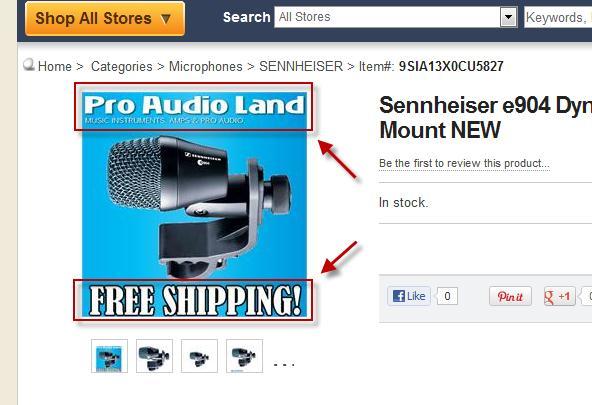
2. Image Recommendation: When appropriate, use labels on the image to identify important parts or features.
Description: Unlike the previous example, this text on the image is appropriate because it helps the customer visualize the devices this battery can charge and where the output ports are located.
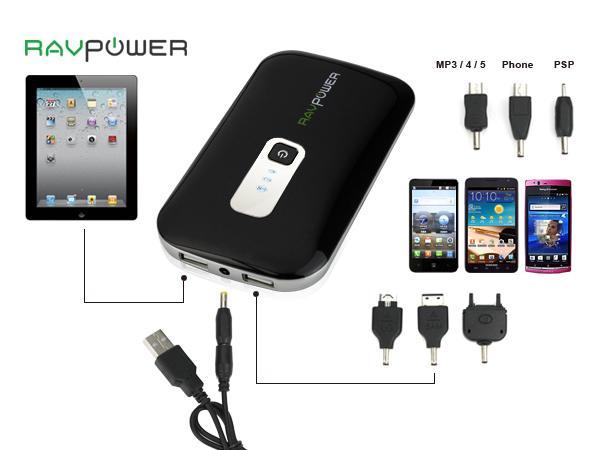
3. Image Recommendation: Include an image of accessories that are included with the product (ex. gift box, remote control, cables, bags, etc.) only if it is important for the customer to see.
Description: This SKU is a kit that contains a camera, lens, memory card, a carrying bag, and other accessories. This helps the customer visualize all that is included in the package.
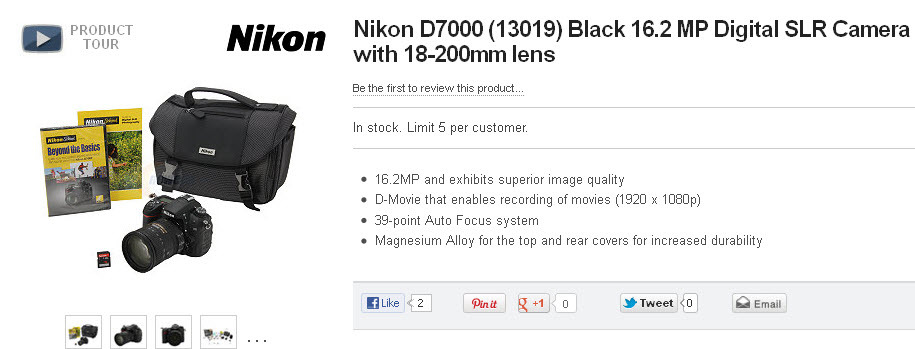
4. Image Recommendation: Include an image of accessories that are included with the product (ex. gift box, remote control, cables, bags, etc.) only if it is important for the customer to see.
Description: This is a violation of this policy. Although this camera comes with a lens cloth, it probably is not important enough that customers see an image of this. This also includes the seller’s information which is also prohibited.
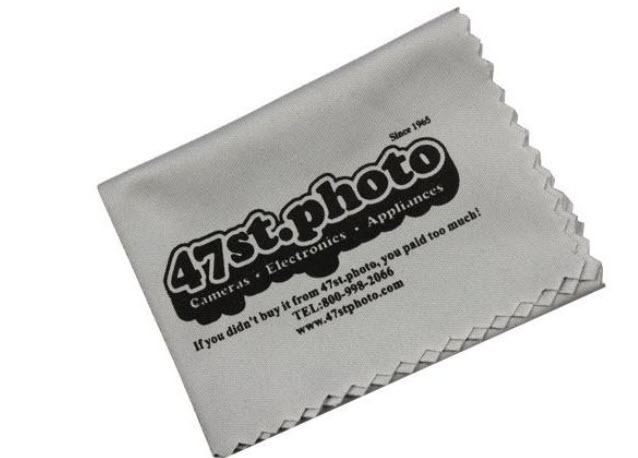
5. Image Requirement: Each image must not contain a collage of images. However, a collage is appropriate if it shows important variances such as color or size/dimensions.
Description: This is a violation of the policy because the two images do not show variance.
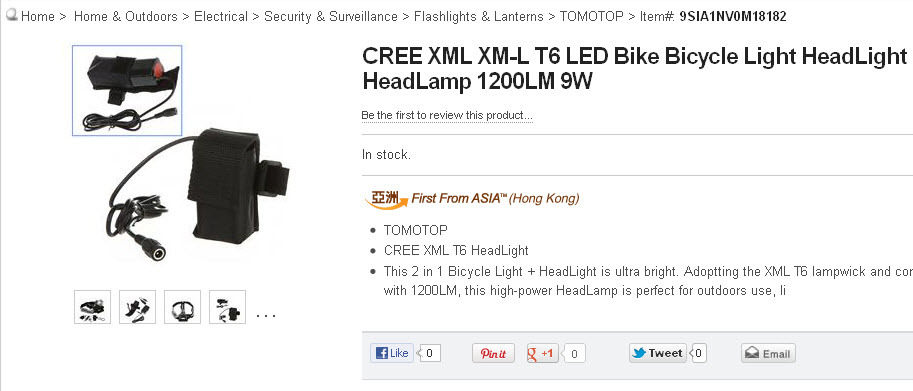
6. Each image must not contain a collage of images. However, a collage is appropriate if it shows an important variance such as color or size/dimensions.
Description: These are good example of when more than one screenshot can appear on the image. When the purpose is to show variance by color or size/dimensions, more than one screenshot can be appropriate.
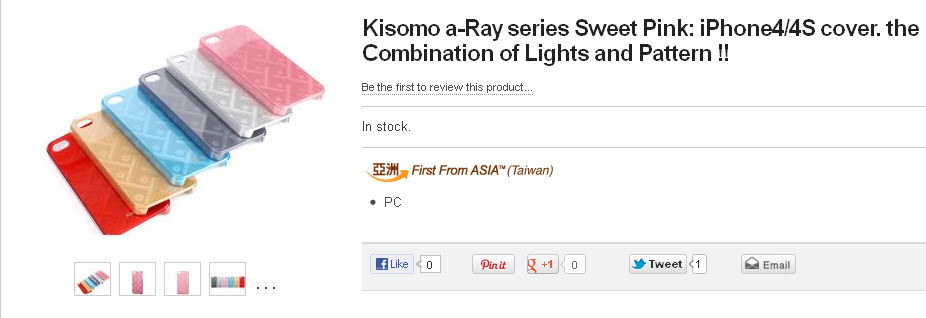
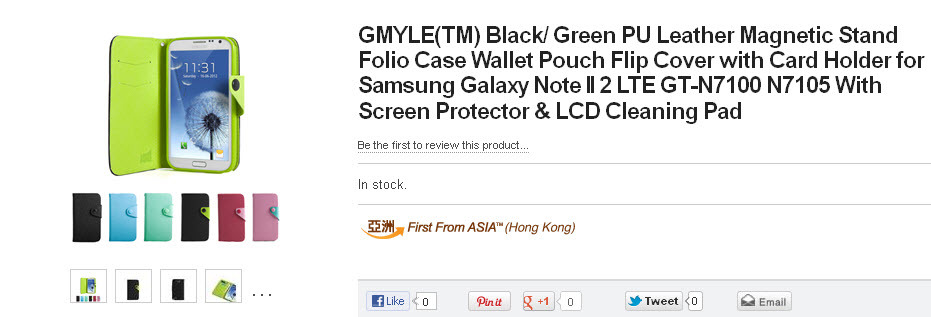
7. Image Recommendation: Include an image that shows the item’s scale. This is usually achieved using models, body parts, rulers, or scales.
Description: Both of these images are good examples because they help the customer visualize the size/dimensions of the SKU. In the second image, text is used to depict the dimensions.
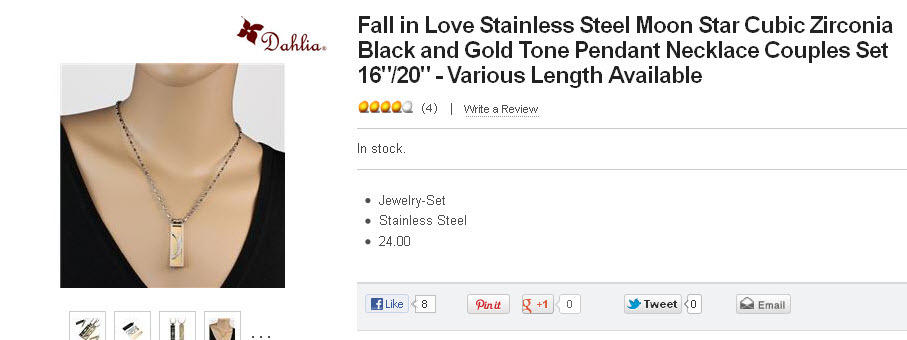
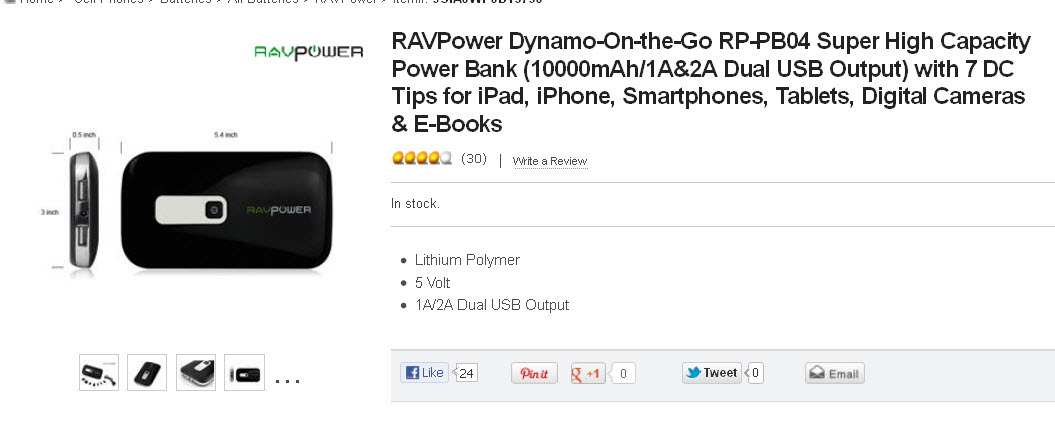
8. Image Recommendation: Include a sizing or conversion chart image for SKUs that have unconventional sizes (ex. costumes). Obviously, the text must be readable.
Description: This costume SKU contains an image that shows a sizing chart. This is a good example because customers need help in determining the appropriate costume size.
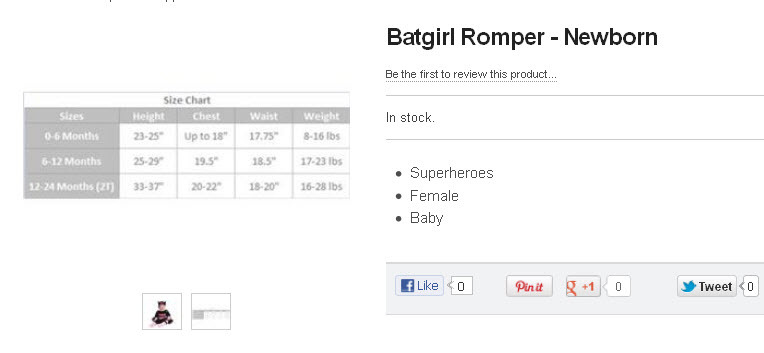
9. Ensure that the image does not portray anything contradictory to the product specifications, especially with respect to variant data like color or size/dimensions.
Description: This is a violation of this policy. This is the wrong image for the SKU. The SKU is for a charcoal filter.
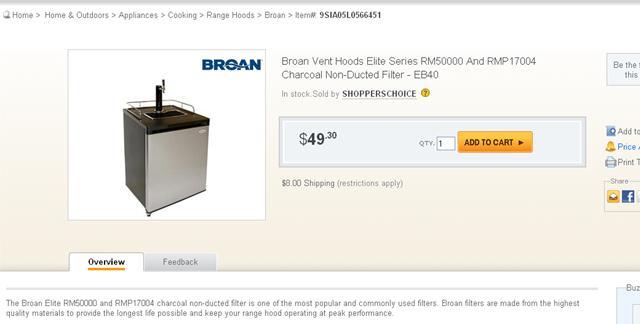
Seller Logos
You can upload a seller logo in the “Account Settings” menu.

Seller logos appear on product pages under the section "Compare Offers from All Sellers" section when there is more than one seller for a SKU.
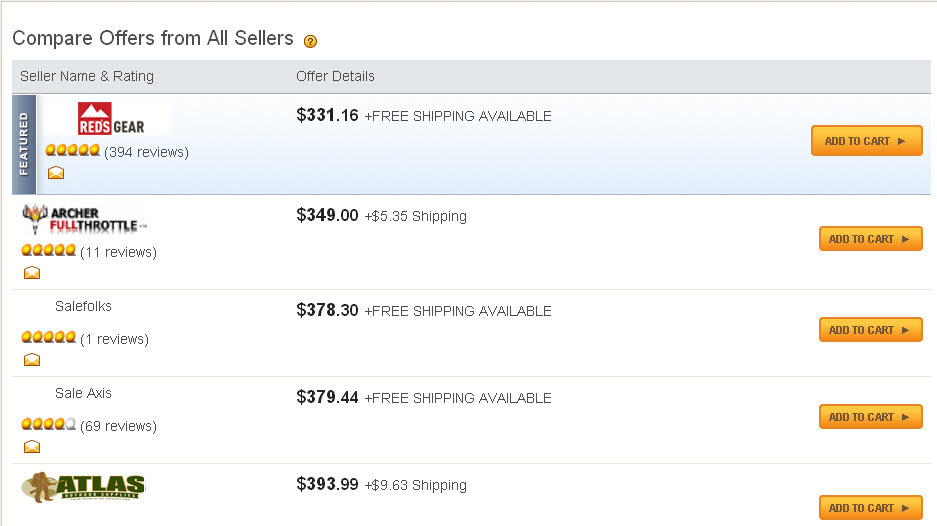
These are the logo requirements:
- 1. Resolution: 127 pixels (width) x 33 pixels (height)
- 2. Unpixelated
- 3. Must be in .gif format
- 4. Animated .gif files are not allowed
Search Engine Optimization (SEO) Guidelines
What is Search Engine Optimization (SEO)?
SEO is the process of getting more web traffic from unpaid listings on search engines, using relevant content to improve page visibility and user experience.
Why is SEO important?
We want to present rich, content-driven product pages to our customers in order to improve both the user experience and organic search ranking. The longer duration a customer spends on a page and the longer the interaction, the more search engines see this page as significant and the better the ranking will be.
Here are some recommendations to help improve SEO rankings for your product pages:
Website Short Title –
• A minimum of 70 characters recommended
• Recommend the following sequence:
[Brand/Manufacturer Name] [Model #] [Product Name] [Most important feature]
• Use important and relevant keywords that best describes the product
Product Description / Overview Text –
• A minimum of 500 words recommended
• Unique, organic paragraphs for each item
• Include relevant keywords, but do not stuff keywords or include “marketing fluff” in your description
• Write content relevant for human readers
• Recommend incorporating rich content such as images, videos, etc. For more information on how to use our A+ Content Service, please review this user guide.
• Utilize Google trends and keyword research to populate description organically with key search terms
Firearms, Weapons, and Knives Policy
Policy Overview
This clarifies the Prohibited Items List item of “firearms and weapons (including but not limited to switchblade knives, butterfly knives, guns, gun parts, gun kits, ammunition, mace, pepper spray, black powder, and explosives)”
Any allowance of weapons and weapon-related accessories permitted by our policy and the category manager must follow these additional requirements:
• The items comply with California law AND the law of the state where the customer resides.
• The seller is located in the US
• The item is shipped within the US
• The seller only offers domestic shipping for the item. International shipping is not permitted.
Additional Requirements
Airsoft, replica, or other imitation firearms
The product description must contain a disclaimer that airsoft firearms are required to have the tip (1/4 inch) of the barrel permanently colored in blaze orange.
All images of the firearm that show the tip of the barrel must show the tip (1/4 inch) colored in blaze orange.
| All airsoft, replica, and imitation firearms must meet all of these criteria: * The product description contains a disclaimer that airsoft firearms are required to have the tip (1/4 inch) of the barrel permanently colored in blaze orange. * The actual SKU must have permanent orange barrel markings. Fake or temporary markings are insufficient. * They can't be converted to shoot lethal projectiles * All images of ammunition magazines must show that it isn't a magazine for a real firearm * All images showing the tip of the barrel must show the tip (1/4 inch) colored in blaze orange * All images of a firearm must show that it isn't real. You can do this by showing the scale of the firearm, modifying the image to clearly show it is not real, or including text in the image such as "Airsoft" or "Toy gun". * All textual description must make it clear that the item is not a real firearm |
|
|
* Paintball cannons * Any replica firearms that do not have permanent orange barrel markings. * Parts and accessories for replica assault weapons, including airsoft or imitation firearms that are based on actual assault weapons. * Replica guns that were made by converting real guns, even if you can't convert them back to a working gun * Silencers for airsoft guns, replica guns, or other imitation firearms |
Ammunition
Any live ammunition and ammunition components are strictly prohibited, excepting a few allowances.
* Ammunition for BB guns, pellet guns, paintball guns, or airsoft guns |
|
| * Empty ammunition boxes. The product description must state that it doesn't contain ammunition * Reloading equipment and weaponsmithing tools are allowed, but only if they cannot be used for assault weapons |
|
| * Converted brass (also known as trench art) * Blank ammunition * Cartridges, casings, shells, or hulls * Dummy ammunition * Gunpowder or primers * Inert ammunition * Live ammunition rounds * Anything not specified in the "allowed" or "restricted" sections |
Assault Weapons
Assault weapons and assault weapons parts are strictly prohibited. This is not an exhaustive list of prohibitions.
| * Diagrams of assault weapons that could possibly be used to build or convert firearms * Manuals, books, or instructional materials for assault weapons * Accessories that fit a variety of firearms, including assault weapons. The content descriptions cannot mention any assault weapon compatibility * Any weapon defined as an assault weapon by federal or California law * Bayonets * Blueprints, milling, or forging specifications for assault weapons * Flash suppressors * Grenade launchers * Instructions or blueprints on how to convert a semi-automatic to a fully automatic weapon * Any item identified as a part for an assault weapon or as an accessory for an assault weapon * Listings for gun parts that don't specify the kinds of weapons the parts are used for * Receivers or frames for assault weapons, regardless of whether they're complete receivers and frames, components and parts of receivers and frames, or "cut" or 80%" receivers |
BB guns, pellet guns, air rifles, or air pistols
BB guns, pellet guns, air rifles, air pistols, or any guns considered weapons by the State of California.
| * Airsoft guns that aren't considered air rifles. Airsoft guns must comply with requirements specified elsewhere * You can use the word "BB" only to describe ammunition for a BB gun |
|
|
* Air rifles and air pistols * BB guns * Pellet guns * Pop guns * Any gun that is typically used to shoot a metal projectile> |
Explosives, grenades, and military ordnance
Such items are strictly prohibited. We also do not allow military items or military-issued items of any sort.
Firearms & Accessories
Actual firearms are prohibited. We allow some firearm parts and accessories only under certain restrictions.
|
* Magazine holders, speed loaders, stripper clips, or moon clips * Books, manuals, or instructional materials about firearms * Butt plates, cases, cleaning supplies, dies, grips, holsters, molds, racks, pistol grips, scopes, slings, stocks, storage cases, or trigger guards |
|
| * Magazines. High capacity magazines are not allowed. High capacity as defined by federal or State of California laws | |
|
* Gun-making, gun-building, or gun-conversion kits * Any kit or set of SKUs, however incomplete it may be, that could be used for gun-making, gun-building, or gun-conversions * Caliber conversion parts, information, or blueprints * Spear guns, including non-pneumatic spear guns * En block clips, barrels, bolts, choke tubes, cylinders, firing pins, hammers, slides, trigger assemblies * Muzzle loader or black powder gun parts or accessories * High capacity magazines as defined by federal or State of California laws * Firearms regardless of their ability to fire, hold old they are, or status as collectibles * Firearm frames, including grip frames * Firearm receivers, including parts, upper or lower, "cut" or "80%" receivers * Flash suppressors * Powerheads, stick guns, or their equivalents * Sears * Silencers * Starter pistols or blank guns, regardless of their markings * Zip guns |
Hand Weapons
Most hand weapons are prohibited.
| * Instruction or traiing manuals on how to use hand weapons * Wooden or foam-padded practice swords |
|
| * Training or practice batons, night sticks, nunchakus, tonfas or other martial arts weapons are permitted if they are made of rubber foam, dense foam, or foam with plastic interior tubes--you must specify these details in the product description. However, weapons that are foam padded or foam with a metal interior are not allowed. | |
|
* Brass knuckles, including those made from other materials. * Knives with raised knuckle guards or knuckle dusters * Leaded canes, crutches, staffs, or sticks * Nightsticks, billy clubs, war clubs, batons, PR 24s, Monadnock batons, ASPs, tonfas, truncheons, and similar items * Nunchakus (aka. nunchucks or numchuks), chain sticks, or two-section staffs * Sansetsukon or three-section staffs * Saps, sand clubs, sandbags, slung shots, or blackjacks * Concealed batons |
Knives
See below for more details. Any knives that are concealed are prohibited.
|
* Books, information materials, and training on Shurikenjutsu * Machete * Oversized balisong knives - the kind that require 2 hands to open * Tactical daggers * Kitchen knives |
|
|
* Spring-assisted knives. There has to be a manual to manual movement of the blade. The thumb stud, screw, or finger notch is clearly visible on the blade. The website short title must also specify that it is a spring-assisted knife. * Training or practice throwing stars that are made of resin and are not sharp enough to penetrate through the body * Swords. Bladed swords are allowed only if they are collector’s items or are known to be used only for decoration |
|
|
* Butterfly knives * Switchblade knives * Parts for switchblades * Practice balisong or butterfly knives * Balisong nives * Dual-action knives * Gravity knives * Hidden or disguised knives such as air gauge knives, belt buckle knives, lipstick case knives, or writing pen knives * Out-the-front (OTF) knives * Paratrooper knives * Push knives (a.k.a. push daggers, punch daggers, punch knives, push dirks, and T-handled knives) * Replica or imitation switchblades * Shuriken * Sword canes * Throwing stars, ninja stars, throwing cards, Batman symbols, Throwing knives, or Cyclone knives |
Other Weapons
Miscellaneous weapons have some restrictions
| * Blowgun darts * Bows and arrows * Crossbows * Information or instructions on how to make a potato gun * Paintball blowguns * Slingshots * Spud pistols |
|
| * Pepper Spray, disguised pepper spray, or mace * Blow guns * Dart guns * Flare guns or flares * Potato guns such as bazookas, cannons, or launchers * Tear gas |
Stun Guns
Stun guns are strictly prohibited. Only holsters for stun guns are permitted
Costume Content Optimization
Thank you for being a valued Newegg partner! The purpose of this document is to show you the best way to create or update the content for your costume SKUs. Following these requirements and guidelines will help ensure that your content is in the best shape possible for costume shoppers on Newegg's site.
Useful Links
Grouping SKUs
Newegg customers want the shopping experience for costumes to be similar to the shopping experience of other apparel items, such as shoes. The customer does not want to see separate listings for each variant size or color in the search results. Instead, the customer wants to find the costume they want, and then use drop down boxes to get the correct size and color.
Incorrect
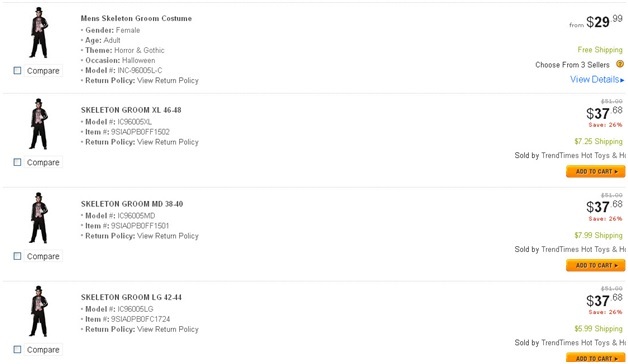
Correct

1. The "Costumes" (1045) subcategory has two groupby properties:
- • Costume_Size
- • Costume_Color
The values for both groupby properties "Costume_Size" and "Costume_Color" must be provided if grouping SKUs. Our system requires that values are provided for BOTH of these properties, or the SKUs will not group.
2. Costume SKUs have to have different values for "Costume_Size" and "Costume_Color" to group.
- Incorrect
SKU # Costume_Size Costume_Color 1 Small Blue 2 Small Blue 3 Medium Blue - Correct
SKU # Costume_Size Costume_Color 1 Small Blue 2 Small Green 3 Medium Blue
If the value is not available, you can contact the Newegg Content Team at mktp.content@newegg.com for the procedure on getting your values added to our system.
Important Properties
There are some properties for costumes that are of particular importance. Following these recommendations will improve the ability for customers to find your product.
1. Links on the costume main navigation page. The visual navigation page for costumes is located at http://www.newegg.com/Costumes/Category/ID-42?Tpk=costumes. Some of the links include "Batman", "Aliens", "Colonial", etc. If possible, make sure that you find that your SKU has this value in one of the designated properties.
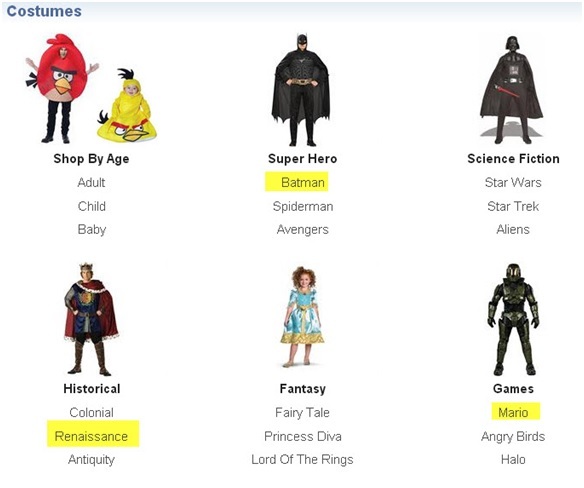
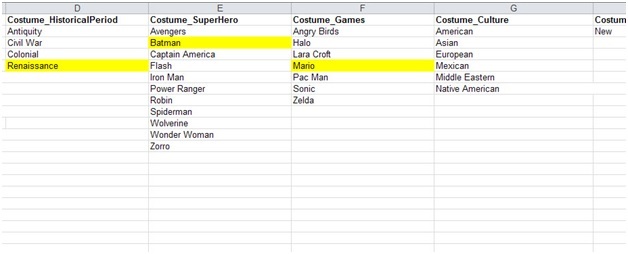
2. Guided/Advanced Search Properties.
Some properties are also included as filters on the website. Although most of these properties will accept user input, only those values that are included in the datafeed will show up as a filter value. The properties that will be in the Guided/Advanced Search include (in the order shown on the website):
- • Costume_Age
- • Costume_Gender
- • Costume_Size
- • Costume_Theme
- • Costume_Sexy
- • Costume_TV,Movies & Games
- • Costume_Culture
- • Costume_Historical Period
- • Costume_Couples Costume
- • Costume_Color
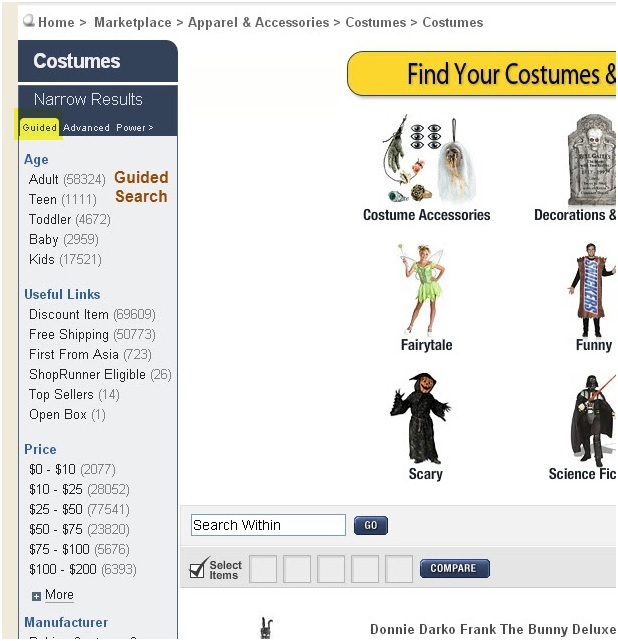
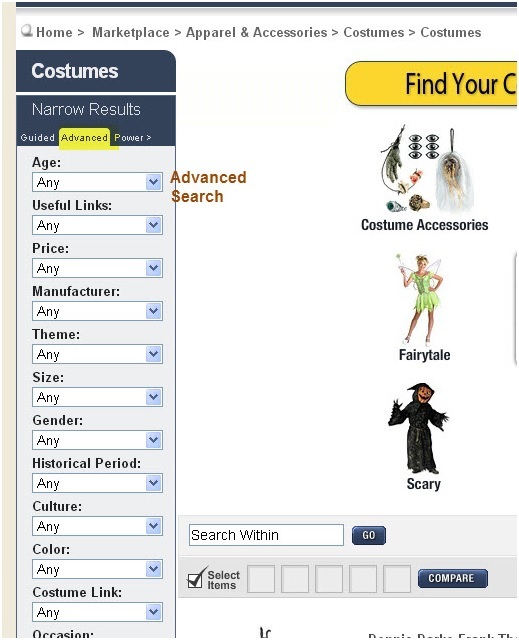
3. New Properties
We have three new properties for costumes: "Costume_Couples Costume", "Costume_Sexy", "Costume_TV, Movies & Games". These are new properties and the values that will optimize the search and navigation capabilities for your SKUs. They will also appear as filters in Guided Search and Advanced Search.
| Costume_Couples Costume | Yes |
| No | |
| Costume_Sexy | Yes |
| No | |
| Costume_TV, Movies & Games | 300 |
| Alice in Wonderland | |
| Alvin & Chipmunks | |
| Angry Birds | |
| Assassins Creed | |
| Avatar | |
| Avengers | |
| Barbie | |
| Batman | |
| Benjamin Franklin | |
| Black Widow | |
| Captain America | |
| Cinderella | |
| Despicable Me | |
| Flash | |
| George Washington | |
| Green Lantern | |
| Halo | |
| Harry Potter | |
| Hawkeye | |
| Hello Kitty | |
| Hulk | |
| Hunger Games | |
| Iron Man | |
| Lincoln | |
| Link/Zelda | |
| Lord of the Rings | |
| Mario Bros | |
| Matrix | |
| Minions | |
| Monster High | |
| Monsters Inc | |
| Mortal Kombat | |
| Napoleon | |
| Pac Man | |
| Pirates of the Caribbean | |
| Power Rangers | |
| Robin Hood | |
| Robocop | |
| Sesame Street | |
| Skylanders | |
| Snow White | |
| Spiderman | |
| Star Trek | |
| Star Wars | |
| Street Fighter | |
| Superman | |
| Teenage Mutant Ninja Turtles | |
| Toy Story | |
| Transformers | |
| Uncle Sam | |
| Vampires | |
| Zombies |
Image Guidelines
1. Image Requirements
These are the image requirements for all SKUs on Newegg:
* Minimum dimensions: 320 pixels wide OR 240 pixels high
* Only .jpg or .jpeg formats/file extensions are acceptable
* Each image’s maximum file size is 5 megabytes
* You can only upload 7 images per item
* Images should be clear and free of extra text, watermarks, and/or merchant logos
* Blank images and images containing messages similar to “Image Coming Soon” are prohibited
* All images must comply with copyright and other laws
2. Image Recommendations
We have found that enhancing your images increases the chances of a purchase. We recommend the following practices for costumes:
a) Ensure that the primary image is the image of the full costume. The primary image is the image that will display on search results and is the first image customers will see on the product page. Please refer to our seller Quickstart Guide for more information about how to set primary images:
https://sellerportal.newegg.com/Guideline/Integration_Guide.pdf
b) Do not include identical images. Redundant images are distracting and reduce the quality of the shopping experience.
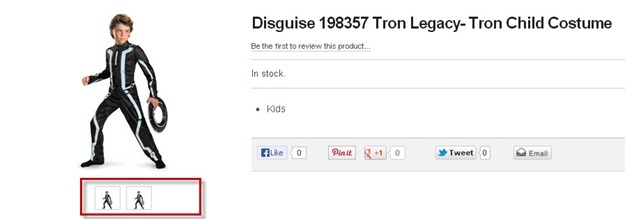
c) Include a sizing or conversion chart image. Currently, we are unable to include charts in the product description. However, a sizing chart as one of the secondary images will help customers pick the right costume size. Obviously, the text must be readable.
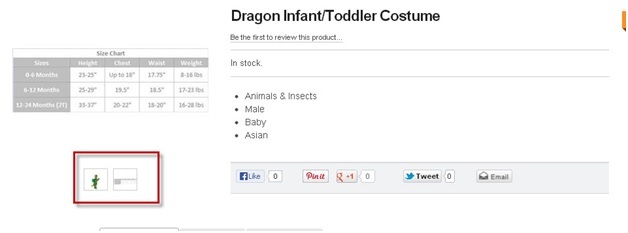
d) Offensive Content Policy. Make sure that your images do not violate our offensive content policy.
Images that show nudity, depict genitalia, or show sexual expression are prohibited.
More information on offensive content can be found at http://promotions.newegg.com/marketplace/contentpolicy/ContentPolicy.html
These are some examples of offensive content that is prohibited on Newegg's website:

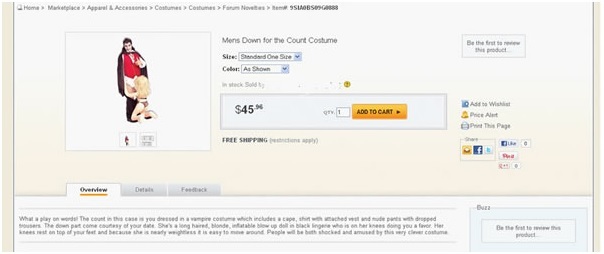
e) Include images that show different angles, costume parts, or close-up shots.
Images showing different shot angles help customers imagine how the costume would look on them.
Images of other costume parts such as the hat or vest can give customers more information about these important accessories that are included with the costume.
Close-up shots can show more detail about the fabric or quality of a costume.
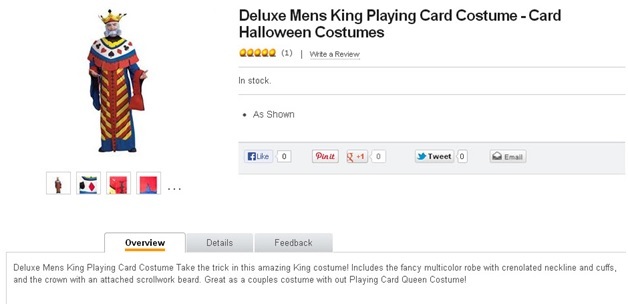
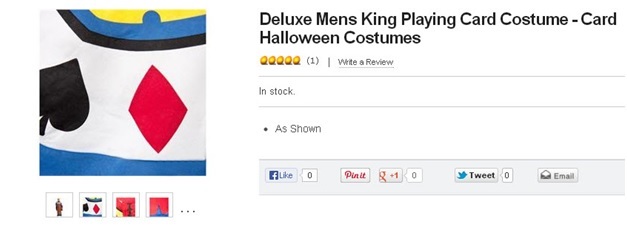
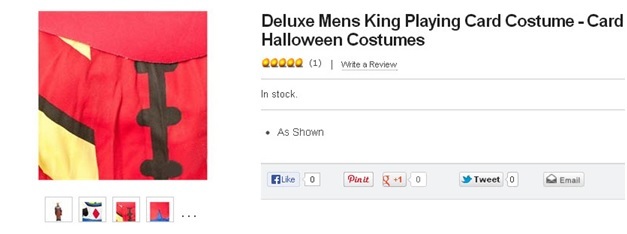
Website Short Title Guidelines
Website short titles are the titles that appear on the product pages and in search results.
Website short titles are one of the most important pieces of content for customers because it tells them what the SKU is.
Therefore, it is essential that sellers are more conscientious about the website short title.
Many customers make a quick judgment on the relevance of a SKU by quickly glancing at the title and the image.
Website short titles that are less readable or do not clearly communicate what the costume is will have a lower chance of being purchased.
Requirements
1. Keep it short. Only include enough information for the customer to determine what the costume is.
2. Proper capitalization, spelling, and punctuation. Refrain from using abbreviations that are hard to understand.

3. Refrain from using special syntax and characters such as parentheses, backslashes, dashes, and plus signs. Parentheses are ok for baby and toddler sizes.
4. Do not include the word “Halloween” in the title for costumes.
5. Do not include the manufacturer part number in the title. We have found that this is very distracting for customers who are shopping for costumes on our website.

6. Stay consistent with terms for age group and gender. We discourage sellers from using the term "Child" in some costume titles and using "Kids" in other titles.
• Tween
• Teen
• Men's. Communicates both gender and age group
• Women's. Communicates both gender and age group
• Child vs. Kids
• Girls. Communicates both gender and age group
• Boys. Communicates both gender and age group
• Infant vs. Baby vs. Toddler
Recommend
1. A good rule of thumb is to omit information from titles when you are grouping SKUs based on that information.
For example, if you are grouping SKUs and they vary only by size, then it is usually good practice to omit that information from the title.
2. Do not include gender information in the title. Most costumes do not need this information in the title, especially if you include this information in the "Costume_Gender" property.
The only exception could be for children’s or babies’ costumes.
3. Omit age group information in the title except those for babies, toddlers, and perhaps kids.
There may be exceptions when the image and the kind of costume does not clearly communicate this (see "White Ninja" below for a good example of when age group information would be appropriate).
4. Omit brand information from the title. Most customers do not care about the costume brand and this information crowds out more useful information.

5. Keep title character count between 50-100 range
6. Keep redundant and repetitive information out of the title.

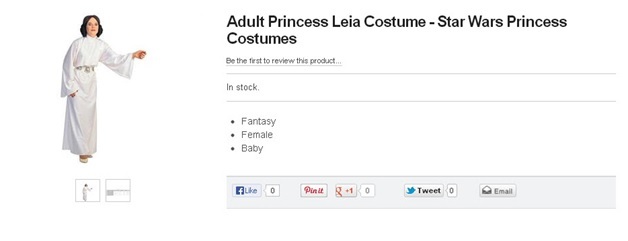
7. Include the most important information about costumes in the beginning of the title. We recommend using the following format: [Age group] + [Costume name] + [Misc. information] or [Costume Name] + [Misc. information] + [Age Group]
• Tween Snow White Huntsman Movie Costume
• Disney Tinker Bell Adult Costume
8. Make sure the title reads clearly by avoiding random ordering of information.
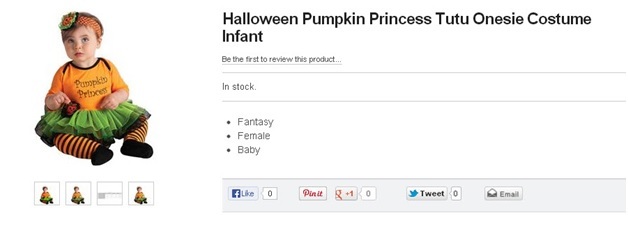
Product Description
Product descriptions are displayed on the "Overview" tab on the product page. The purpose of a product description is to provide substantive and informative information for customers.
Must Do
1. Enter a detailed description on the product page. The product description should contain enough information to describe the costume.
2. Specify any accessories or other items that are not included with the costume, especially if the image shows these accessories.
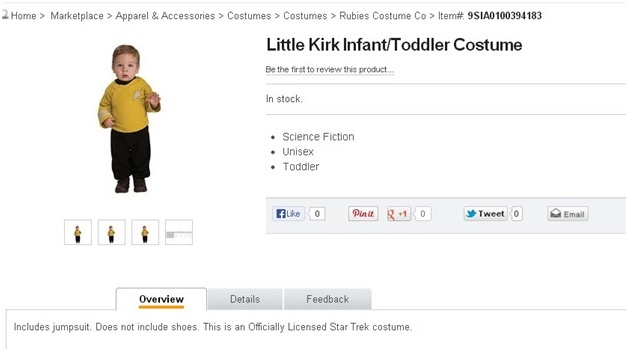
3. Clarify anything about the image that could be misleading to customers. This includes any of the following:
• Any accessories that are not included with the costume, especially if the image shows these accessories
• Coloring information
• Specifics about the costume that are not obvious
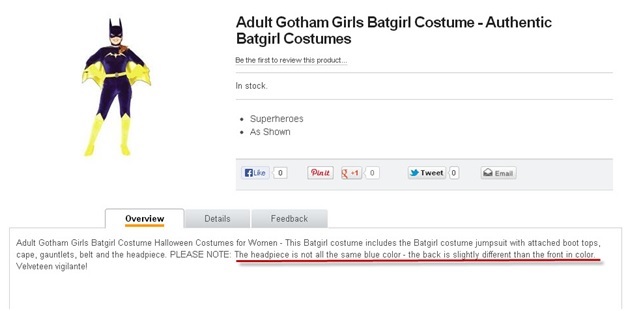
Must Not Do
1. Do not include seller-specific information such as shipping information and RMA policies.
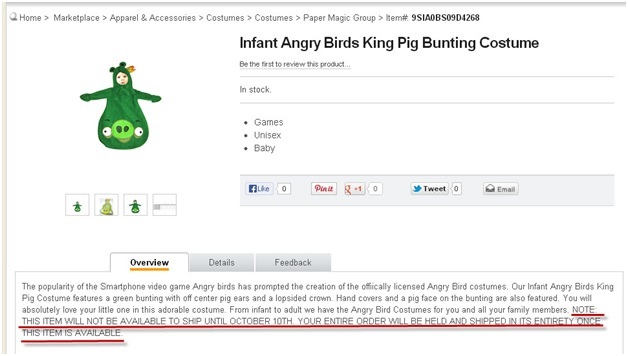
2. Do not use excessive filler and marketing fluff
3. Do not create product descriptions that do not provide enough product information
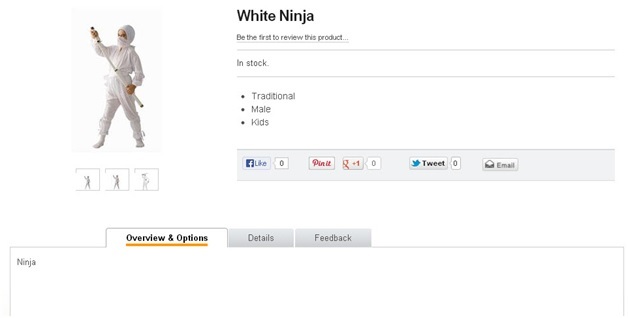
1. Use proper spacing and formatting such as bold, underlining, or italics when appropriate
2. A writing style that is clear, but also pleasurable to read
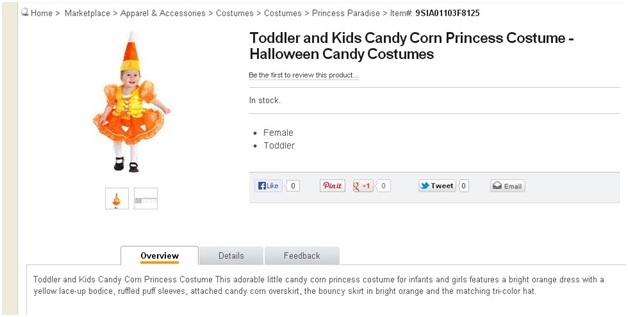
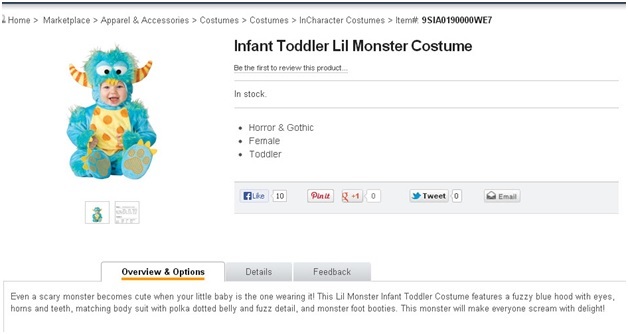
3. Include brand information if it makes the content more informative for customers
4. Include sizing chart information in the product description. Although you cannot create a chart format, you can still use other formatting techniques to show size information.
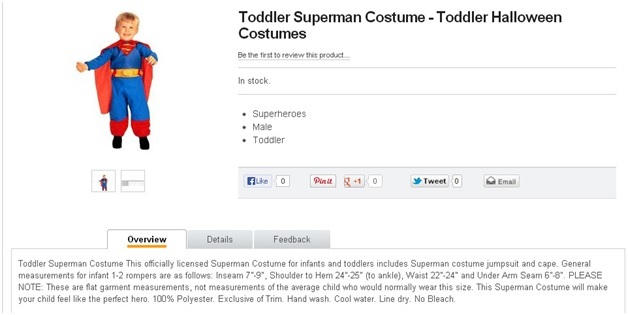
1. Size Values
• Make sure that the costumes you group together do not include different sizes with one size listed as "One Size" or grouped with various colors, one of which is "As Shown".
This is inaccurate information and is confusing to customers.
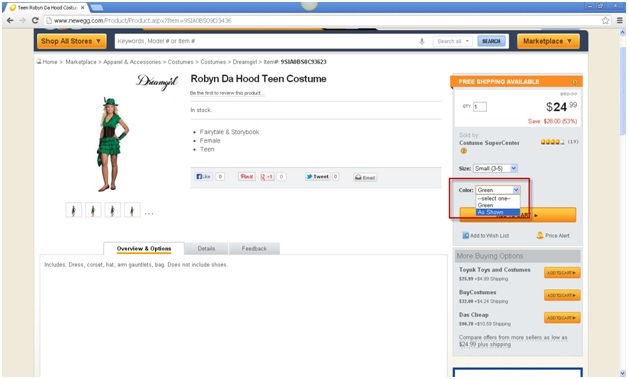
• Inconsistent size values for your costumes. Check your costume SKUs and make sure you stay consistent with your size values.
The example below shows a seller with size values with many variants highlighted in yellow.
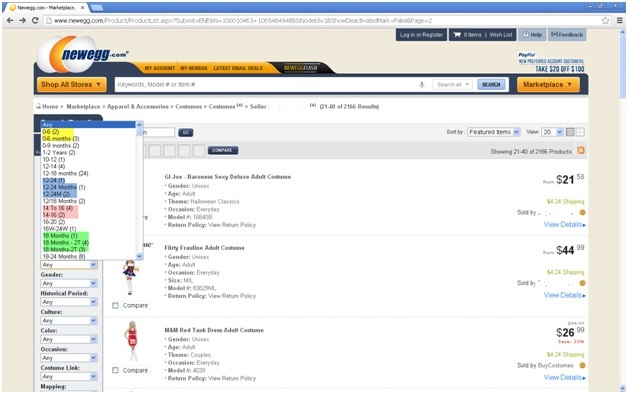
• Do not use duplicate size and color values for your costumes that are grouped together.
Sellers must avoid creating a costume, small and red, is grouped with another costume, but the other costume is also small and red.
Grouping SKUs like this will cause problems on our website, because the system will not know which SKU the customer intends to select.
As a result, the “Add to Cart” button may disappear, leaving the customer without the ability to purchase the costume.
- Incorrect
SKU # Costume_Size Costume_Color 123 Small Blue 1234 Small Blue 12345 Medium Blue - Correct
SKU # Costume_Size Costume_Color 123 Small Blue 1234 Small Green 12345 Medium Blue
2. Duplicate listings of the same SKU. Our system will create separate listings for the same SKU if the UPCs, Manufacturer Name, or Manufacturer Part # differ.
There have been cases in the past when sellers used two different mfr + mp# or mfr + upc and created two listings.
Duplicate listings cause messier search result listings and reduce the chances a customer will be able to locate the costume he wants.
3. Inaccurate information. Make sure that the image, website short title, product description, and property values do not provide contradictory information.
The example below shows that a costume in which the image and website short title do not match.
Is this a Spider Man costume or a Knight costume? The image doesn’t look like it is for infants.
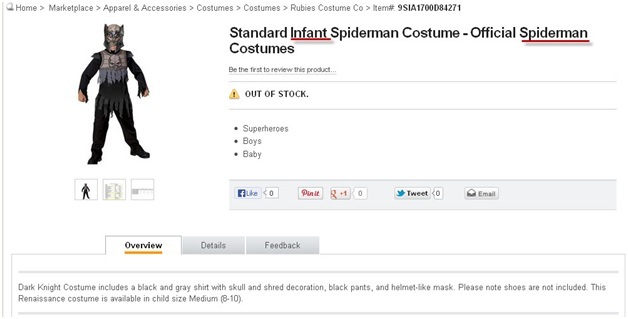
4. No property values. Be sure to include property values. All of the website navigation and the filters use property values.
The example below has no properties, and so this will not show up in any navigation links or filters.
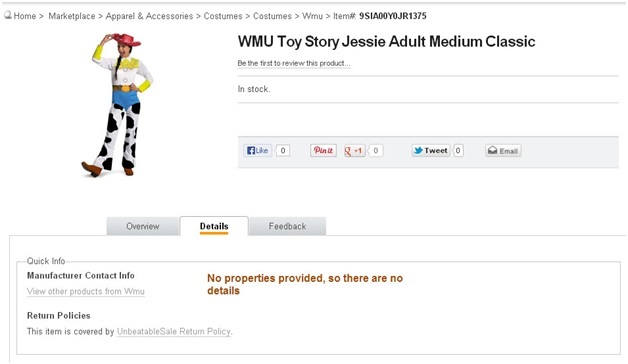
5. Offensive Content. Make sure none of the content violates our "Offensive Content Policy". Any violations could result in seller account suspension or termination.
You can review our "Offensive Content Policy" at
http://promotions.newegg.com/marketplace/contentpolicy/ContentPolicy.html#Offensive Content
6. Miscategorized SKUs. It is important that you place your SKU in the correct subcategory. We have five subcategories for costumes:
• Costumes (ID# 1045)
• Costume Accessories (ID# 1046)
• Decorations & Props (ID# 1047)
• Mascot Costumes (ID# 1048)
• Pet Costumes (ID# 1049)